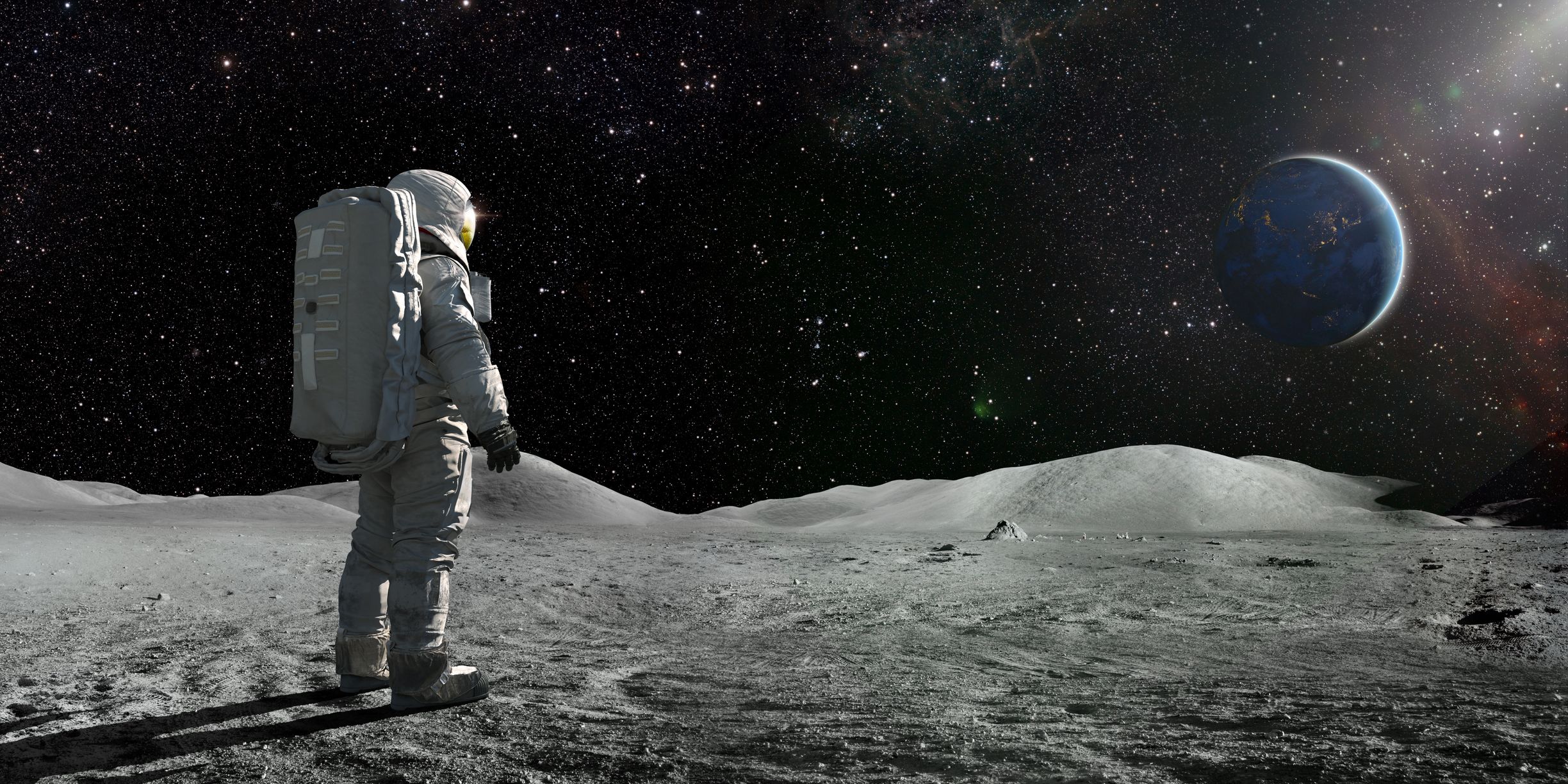
Foreword
Professor Emma Bunce, President of the Royal Astronomical Society
We have always thrived on the possibility of exploration. First across continents on our own planet, and more recently to the Moon and beyond.
We are at an important stage in our development of these activities, and it is exciting to contemplate the future of the UK space sector, our use of space for the good of our planet, and its robotic and human exploration more widely. The ‘space age’ is still relatively young – just 60 years – but it is clear that our future and that of our planet will be reliant on space technology and the application of space-enabled data. The global space industry is expected to grow from an estimated £270 billion in 2019 to £490 billion by 2030; in the UK the space sector currently employs as many as 45,000 people, and our ambitions in space are expanding to reflect this global evolution. The government’s National Space Strategy brings together civil and defence policy into a joint vision of the future of space for the first time, and many in the industry are keen to maximise the mutual benefits and opportunities that may offer. Soon, new UK launch sites and spaceports will transfer sub-orbital flights to the edge of, and small satellites directly into, space – an exciting prospect for the sector, and for local communities who are hosting these economy-boosting activities.
The UK participates in many international space activities including the European Space Agency’s mandatory Science Programme, the European Southern Observatory, and the Square Kilometre Array. As a planetary scientist with direct involvement in a variety of space missions, I am incredibly proud of the UK instrumentation development and subsequent world-leading exploitation of data in astronomy and solar system science. Recent examples include UK contributions to the James Webb Space Telescope, Solar Orbiter, BepiColombo and the future Jupiter Icy Moons Explorer. In addition to turning our gaze outwards to explore deep space and other planets in our solar system and beyond, we are involved in a host of Earth Observation space missions that help us monitor and understand our planet and how it is changing. These missions help support the management of the environment and international aid efforts in times of crisis.
All these space activities can serve as inspiration for the next generation of scientists and engineers, and entities such as ESERO-UK help to promote the use of space to enhance and support STEM teaching and learning in the UK. It is essential that we diversify the delivery methods of education and skills-based training required to meet the expectations of the space sector we envisage for 2030, and to ensure this we will train a diverse workforce that will command an inclusive environment. The potential of space, and of a well-established space sector, is vast. It will enable substantial national and international economic growth, diversify employment opportunities and routes into a traditionally ‘academic’ sector, and create opportunities for local communities, UK industry and academia to work together. The UK is poised to lead in conversations about sustainability, particularly of space, and in practical applications of space data here on Earth. Space is a force for good, enabling us to continue to explore and understand the wider cosmos and our place within it, and aiding our efforts to protect our own planet and the future of humankind.
Professor Emma Bunce is President of the Royal Astronomical Society. She is the Head of the School of Physics and Astronomy at the University of Leicester. She is a planetary scientist, and is the Principal Investigator on the Mercury Imaging X-ray Spectrometer on the ESA/JAXA BepiColombo mission, the only UK-led instrument to fly on the mission.

Making space sustainable: can very low Earth orbits enable a more resilient space environment?
Dr Peter Roberts
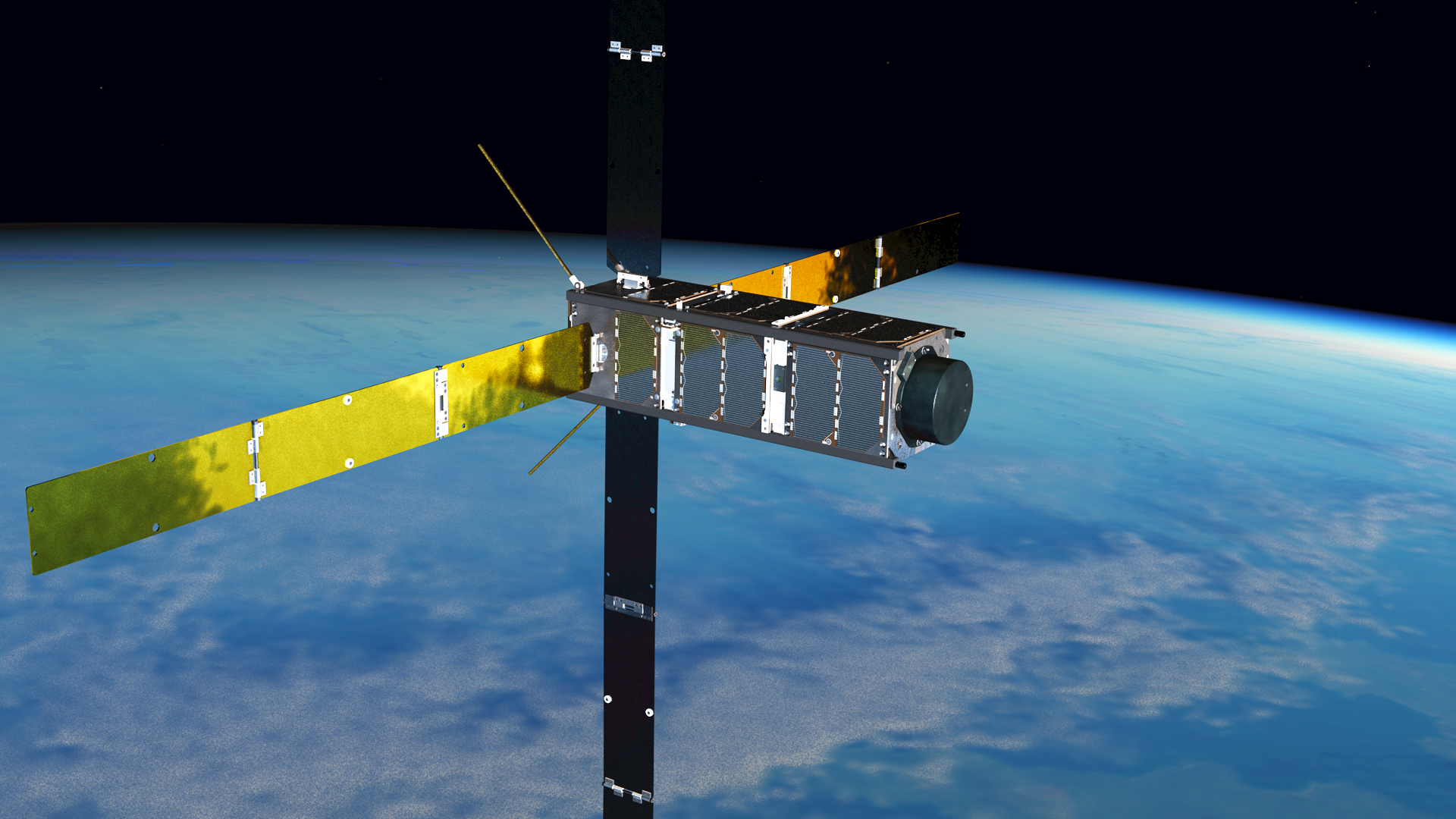
The use of space-based infrastructure to support life on Earth has become one of the successes of the industry. Whether it be the delivery of global communications, navigation using GPS, or remote sensing information to support the UN Sustainable Development Goals, satellites have become an indispensable part of our modern world. However, space is becoming increasingly crowded, and new approaches are required to mitigate the significant dangers of debris and collisions.
Crowded orbits
A new trend has emerged in the sector: the large-scale deployment of massive constellations of satellites in low Earth orbit to provide global communications, delivering data services even in remote locations. These services have traditionally been delivered by geostationary communications satellites from a distance of 36,000km above the Earth, which have the drawback of delays caused by the time taken for radio waves to propagate over these vast distances. In contrast, these new satellites operate at just 1,200km, providing communications comparable in speed and response times to terrestrial broadband. However, to provide these services at these lower altitudes requires ‘mega-constellations’ of thousands of satellites for continuous global coverage.
Such mega-constellations must consider the impact on the orbital environment. The growing problem of space debris has been much publicised in recent years by efforts to find ways of removing failed satellites, by the problems caused by anti-satellite weapons tests, and even by Hollywood through the visually impactful but technically questionable film Gravity. Failed satellites in most low Earth orbits continue to orbit the Earth for tens to hundreds of years, occasionally being hit by other orbiting objects and producing even more debris. Of the 23,000 objects regularly being tracked in orbit by radar, only around 15% are active satellites, the rest being space debris. New approaches are necessary to balance the need for space infrastructure against the threat of space debris.
A solution – very low Earth orbits
Satellites have traditionally been launched to orbits above the Earth’s residual atmosphere to avoid atmospheric drag limiting their orbital lifetime. Yet that same drag is potentially the long-term solution to the debris problem. In recent years there has been increasing interest in operating satellites in what is known as very low Earth orbit (VLEO). VLEO is defined as altitudes below which atmospheric drag has a significant impact on the design of satellites which operate there, and is generally considered to be orbital altitudes below 450km. One such satellite which operates in VLEO is the International Space Station, which must be periodically boosted to stop its orbit from decaying.
Operating at these lower altitudes has numerous benefits both for the services provided and for the design of the satellites themselves. For communications, the response time is quicker even compared to the new communications constellations, and for remote sensing, the resolution of the imagery taken is improved or smaller cameras can be used, reducing satellite size and cost. Operating within the residual atmosphere provides for a more benign radiation environment, while rockets can launch more payload to lower altitude orbits, reducing launch costs. But perhaps the most important benefit of all is that VLEO is a sustainable orbital regime. Satellites and debris objects alike are pulled from orbit within a short period unless drag is actively compensated. Dealing with drag is also the biggest hurdle to overcome while satellites are operational in VLEO.
Making VLEO commercially viable
The UK is at the forefront of developments to enable the commercially viable use of VLEO. The University of Manchester leads the DISCOVERER project, a European Commission-funded study to carry out foundational developments of several emerging technologies. These technologies include materials designed to reduce the atmospheric drag, active aerodynamic control to help control a satellite’s pointing, and a new form of propulsion which collects gas from the residual atmosphere to use as a propellant.
Yet the potential for these developments still needs to be nurtured if the UK is to realise the benefits of this head start. Policymakers can support the use of VLEO as a sustainable and resilient orbital environment in a number of ways.
Policy to support tech for VLEO
There is a need for policy to encourage the development of enabling technologies for VLEO satellites. Satellites are, and will continue to be, operated in VLEO; however, the commercial viability is currently questionable. New technology and research are required to enable sustained commercial operations. Funding is required to build on the foundations and to ensure the UK maintains its global lead in the area. Unfortunately, space technology development in the UK for university-developed technologies is poorly supported by UK Research and Innovation, with the Engineering and Physical Sciences Research Council shying away from supporting space technology development and the UK Space Agency focusing on industrial development. This must change if the technological progress made within universities is to be developed and exploited, effectively creating a level playing field for space technology development against other engineering disciplines.
International space policy changes
International space policy must come to an agreement to prioritise the use of VLEO. One could envisage a future where the vast majority of communications and remote sensing satellites are only licenced to operate in VLEO where satellite failures have little long-term consequence for the space environment.
This would allow higher orbits to be reserved for science, crewed activities, and space exploration. Launches into VLEO are already considered low risk by the Civil Aviation Authority, because of the limited potential damage to other space assets and therefore limited liability to both the space operator and government. However, restricting communications and remote sensing activities to VLEO would require international agreement.
Key international policy considerations
The Inter-Agency Space Debris Coordination Committee (IADC) was set up in 1993 to facilitate cooperation between states on how to tackle space debris, but the resultant non-mandatory guidelines are not sufficient and occasionally ignored. VLEO should become a specific discussion item in the IADC’s working group on space debris mitigation.
Mega-constellations of satellites need to be managed in a sustainable fashion to ensure the long-term accessibility of low Earth orbit and limit space debris. VLEO is a sustainable and resilient alternative to higher orbits, and has the potential to allow both business innovation to take place while limiting long-term impact. However, space policy needs to recognise the benefits of the use of VLEO, and mandate its use.
Dr Peter Roberts is a Reader in Spacecraft Engineering at The University of Manchester.
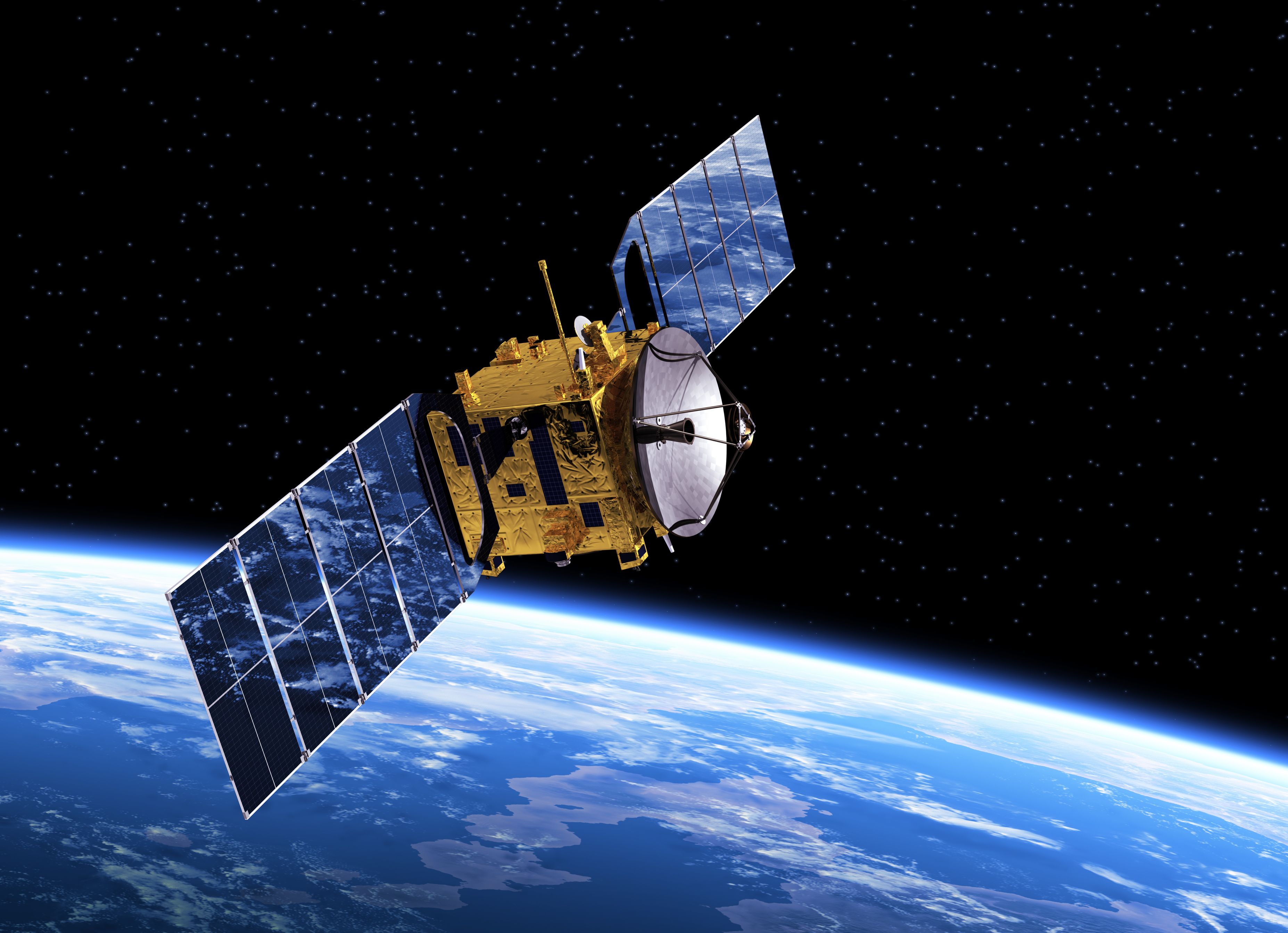
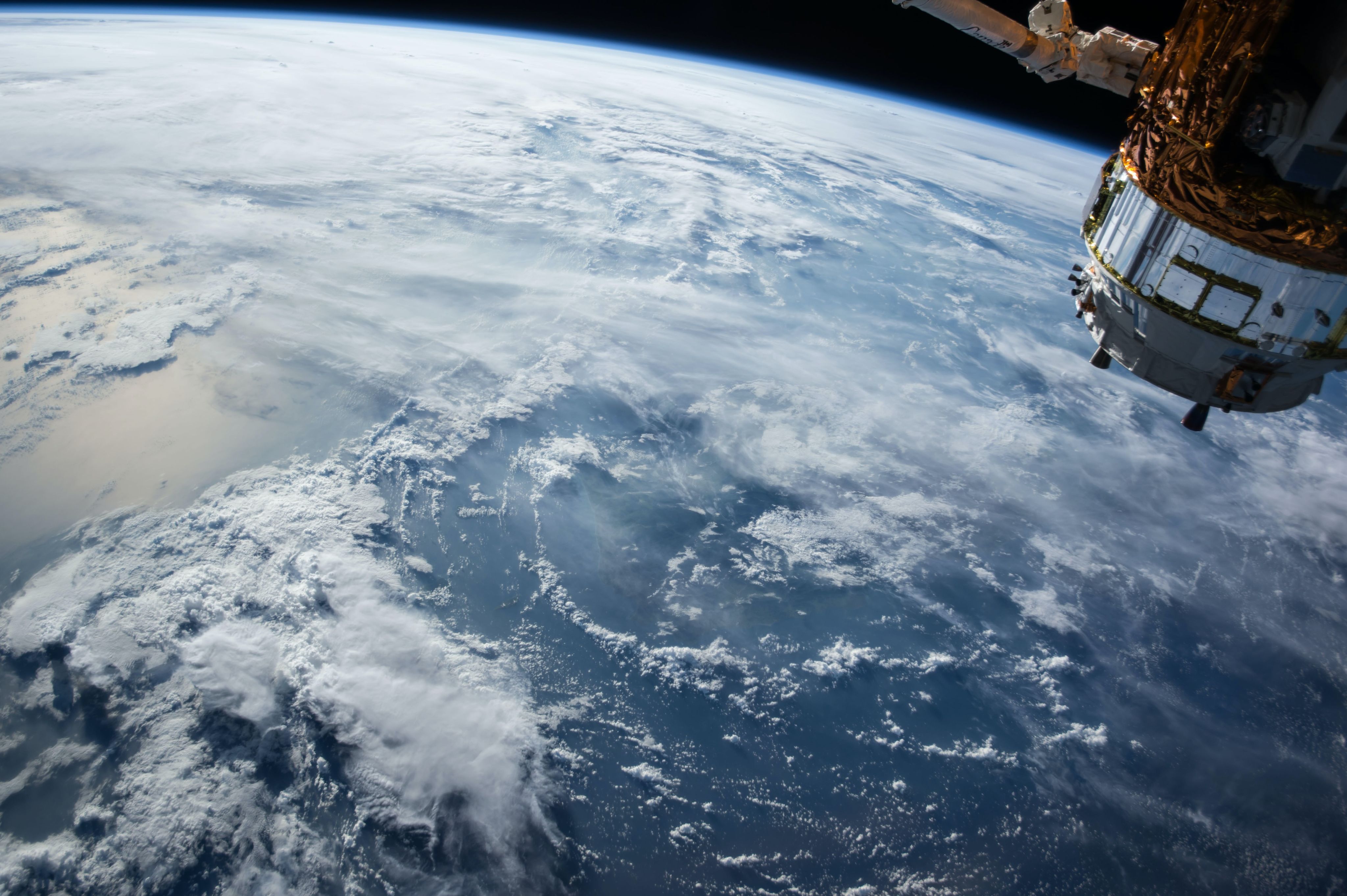
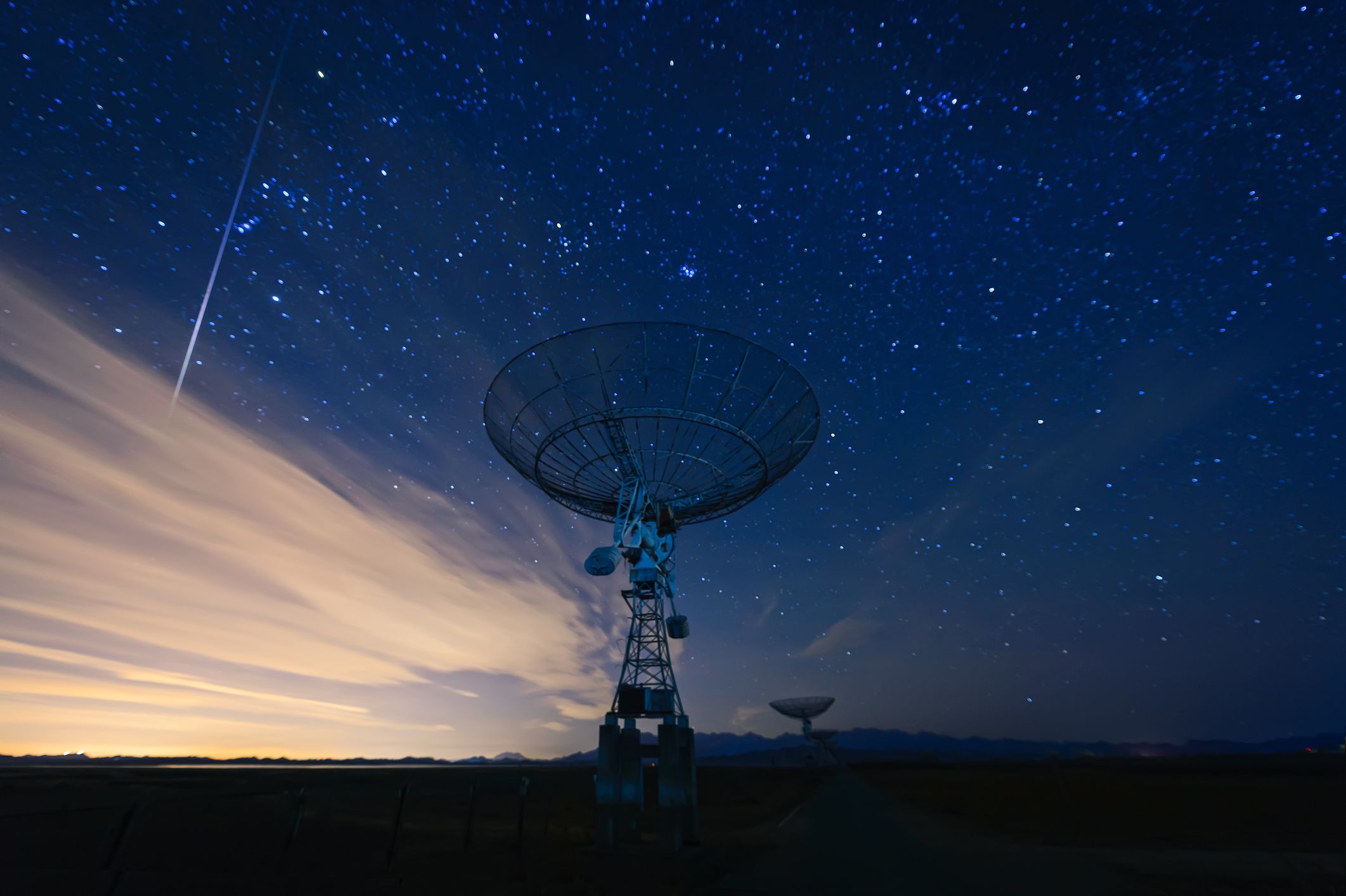

How a graphene-led vision could help the UK lead in a new space race
Dr Vivek Koncherry and James Baker
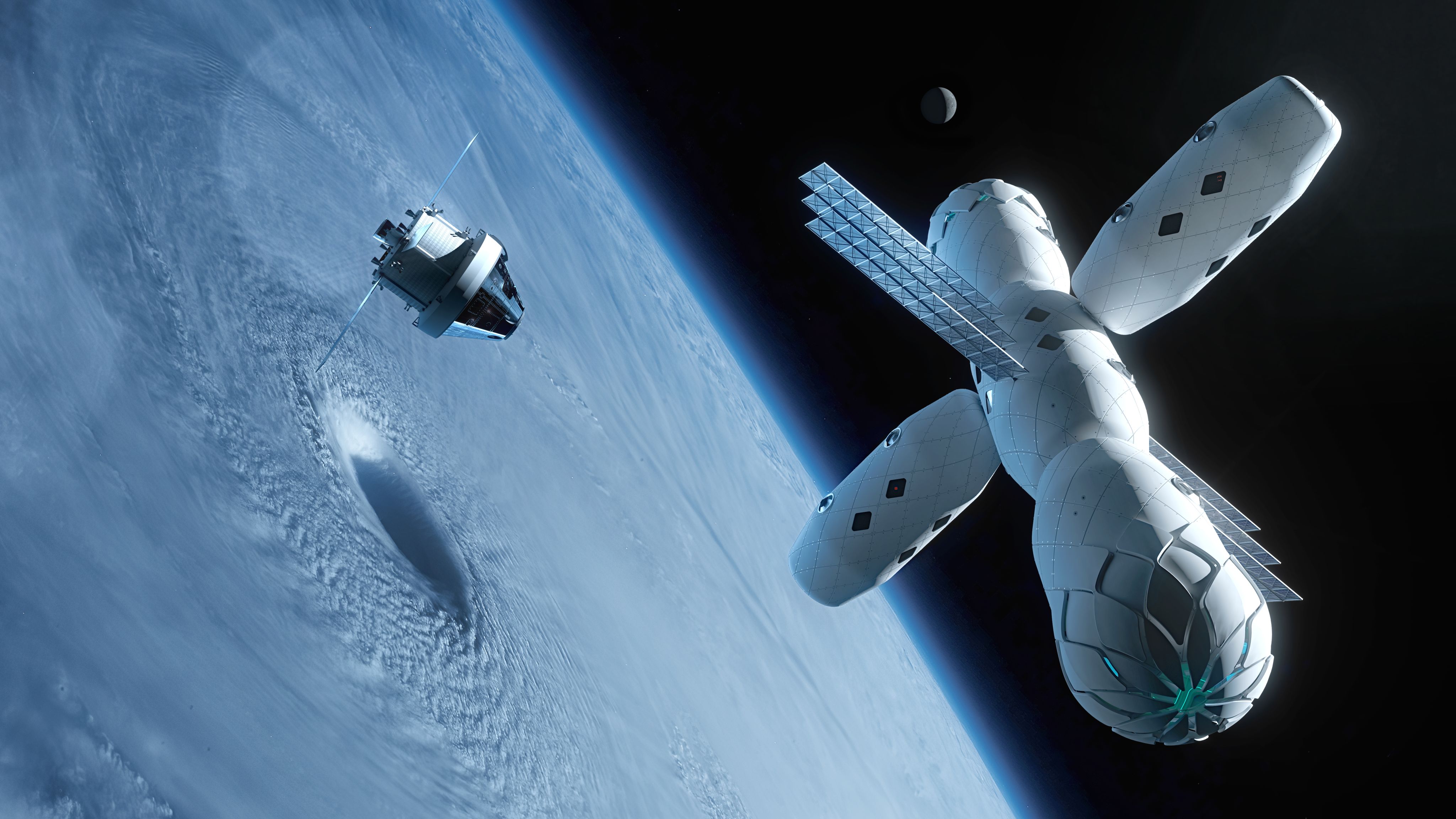
Space travel and habitation was identified as a key emerging sector in the UK government’s first National Space Strategy. A new space race is now well underway, as nations look to develop large-scale spacecrafts or ‘habitats’ where people can live and work, orbiting the Earth. The space industry is expected to be worth $1.4 trillion by 2030. So how might Manchester and a graphene-led vision help the UK grasp this opportunity, both for our economy and for improving life on Earth? New technologies are opening up opportunities as more international players and privately-funded entrepreneurs gain access to space. International Space Station is expected to retire in the next few years and so the agency – NASA – awarded several companies seed funding to develop alternative space habitat prototypes, while China is launching its own habitat module.
Space technologies – a new frontier
Space and its microgravity – the condition in which people or objects appear to be weightless – offers a new frontier, especially for scientists looking to take advantage of this environment to pioneer research in a variety of fields that could benefit life on Earth. The possibilities for this work include massive impacts in major areas of human need, such as developing new medicines and components for microchips.
Microgravity also offers exciting possibilities around how we can make things much more efficiently. Additive manufacturing (3D printing) and rapid prototyping – which is the fast fabrication of a physical part using 3D computer-aided design (CAD) systems – are being considered as the most promising technologies in this environment.
The UK is a world leader in advanced manufacturing and advanced materials, such as graphene and other 2D materials, which gives the UK a clear advantage in developing world-leading space technologies and a platform to support pioneering scientific and commercial missions of the future.
An urgent policy need
Currently, most of the UK’s space sector research and innovation focuses on developing components, rather than creating habitats to enable this research to reach its full potential. The UK urgently needs an ‘Industrial Strategy for Space’ that can develop an innovation ecosystem to deliver a UK-based space habitat programme to manufacture modular space stations for domestic missions and to potentially serve a global market. As well as creating a world-leading manufacturing capability, this plan would also need support for an R&D hub, an investor pipeline, and nurturing a domestic talent pool.
If we focus on manufacturing, some of the biggest challenges to space habitats can be solved through the use of graphene and other 2D materials – areas in which the UK has substantial expertise. The UK aerospace industry can also solve the challenges of developing large, complex structures for outer space applications, through the use of material such as aerogels. The UK’s global lead in advanced materials science and aerospace means we should be more ambitious with our space-manufacturing programme.
The UK’s space habitat pioneer
The Graphene Engineering Innovation Centre (GEIC) and its innovation ecosystem, based at The University of Manchester, could help the UK take a lead in space innovation. This facility is already developing a prototype space habitat system using advanced materials, such as graphene-enhanced composites. 3D-printed scale models have already been produced, and in order to scale these up, a pilot manufacturing unit is being established in a dedicated lab at the GEIC, which features state-of-the-art AI and robotic technologies.
This ambitious pilot project was kick-started with money awarded after the proposed Graphene Space Habitat project won the Eli & Britt Harari Award in Graphene Enterprise. From this success, the Manchester space habitat project has attracted international interest and the first habitat structure was designed in partnership with global architectural, urban planning,
and engineering firm Skidmore Owings and Merrill. However, to secure a competitive advantage for the UK we look to policymakers to make the necessary commitment both in terms of investment and providing a national framework.
A space habitat programme
The UK’s cutting-edge research in advanced materials and manufacturing processes, such as lightweight composite structures, means we are capable of developing and building an entire habitat for human settlement in space. The various capabilities now need marshalling under a single vision.
In support of the government’s National Space Strategy, which sets out a "long-term vision for how the UK can establish itself as one of the most attractive and innovative space economies in the world", we propose that government adopts a UK Space Habitat programme:
1. The UK has the knowledge and ability to deliver this. Graphene@Manchester and its innovation ecosystem, for example, can act as the research and development lead within the programme, working with national and international partners. This graphene-led space habitat partnership could:
Accelerate collaboration between government and private companies within the space sector;
Provide a unique platform for UK scientific advancement. For example, microgravity research will grow rapidly in the coming years and the UK will want its own permanent human presence in outer space to host cutting-edge research and innovation in this environment.
2. Accelerate the development, piloting and prototyping of the UK’s own flagship space habitat system working within the GEIC. This development phase would include designing the advanced robotic systems needed to manufacture space habitats at scale.
3. Establish a full-scale manufacturing facility to build a completed Graphene Space Habitat in Greater Manchester. This facility would benefit from:
Being adjacent to the ‘Graphene City’ innovation ecosystem based at The University of Manchester;
Association with the region’s high potential opportunity (HPO) status in lightweight materials which will help promote the project to foreign investors;
Proximity to the UK’s aerospace cluster and therefore benefit from transferable technologies and an associated supply chain;
Being close to the Rochdale-based Advanced Machinery Productivity Institute (AMPI) which has the potential to develop the bespoke machines and autonomous systems needed to manufacture the habitat.
Expected benefits include:
The UK gets its own national flagship space programme and is established as a global leader in space technology manufacturing with a programme to bring the UK’s scientific and commercial space communities together;
The programme can provide an accelerator for other high priority technologies. For example, spin-off products such as hydrogen storage tanks will support the development of a greener economy back on Earth;
A global beacon for inward investment opportunities;
The programme provides new, high-skilled jobs in Greater Manchester, which will support the ‘levelling up’ agenda.
The idea of building new ways to ‘live and work’ in space may sound futuristic, but the vast opportunities for our economy and for major scientific breakthroughs are real. We must not let this opportunity pass us by.
Dr Vivek Koncherry is visiting researcher at The University of Manchester and Co-founder and CEO (UK and Europe) of Graphene Innovations Inc. Manchester (GIIM), based at Graphene Engineering Innovation Centre (GEIC).
James Baker is CEO of Graphene@Manchester and is a CEng and a Fellow of the RSA (the Royal Society for Arts, Manufactures and Commerce) and Fellow of IET.

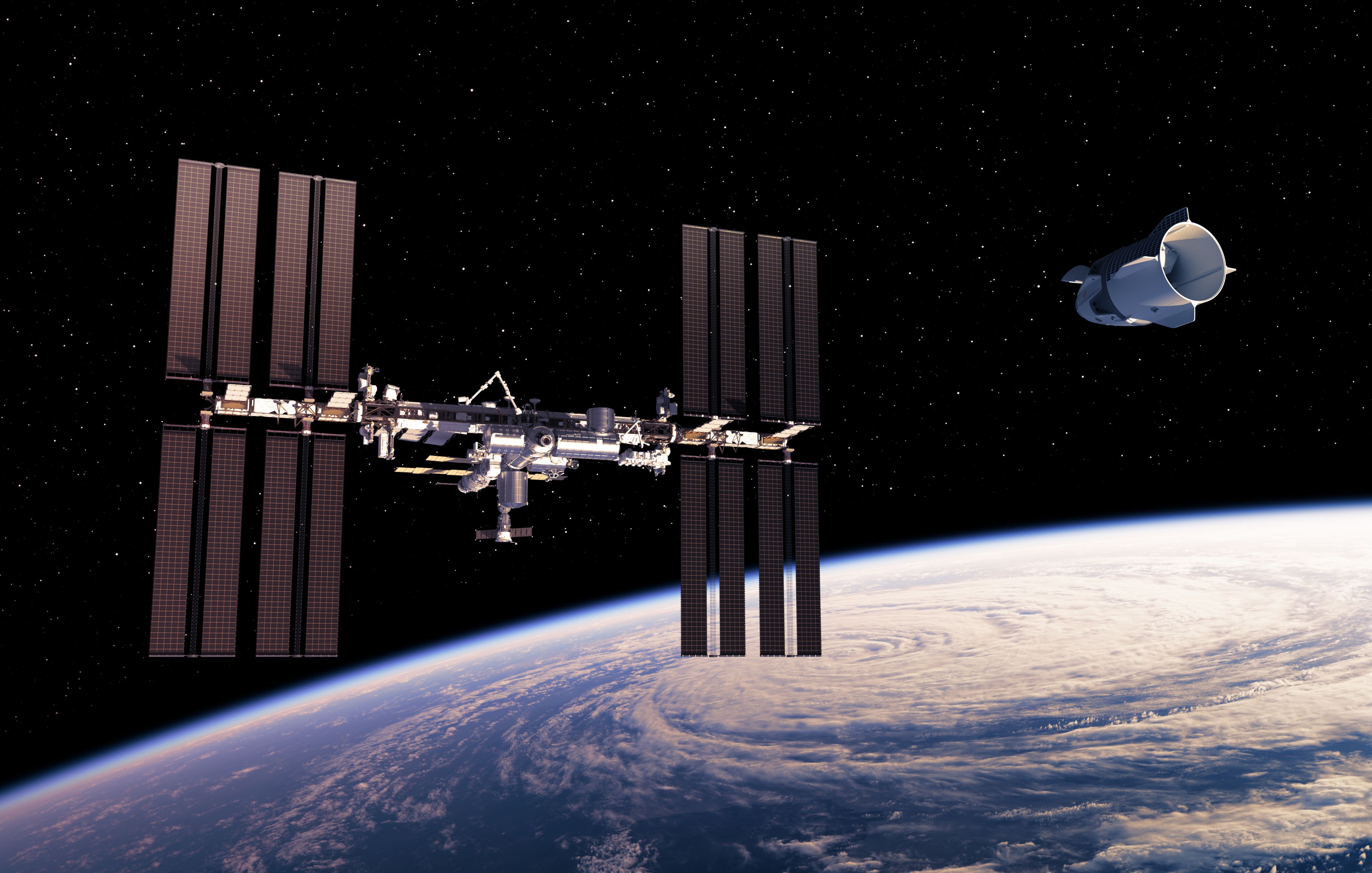
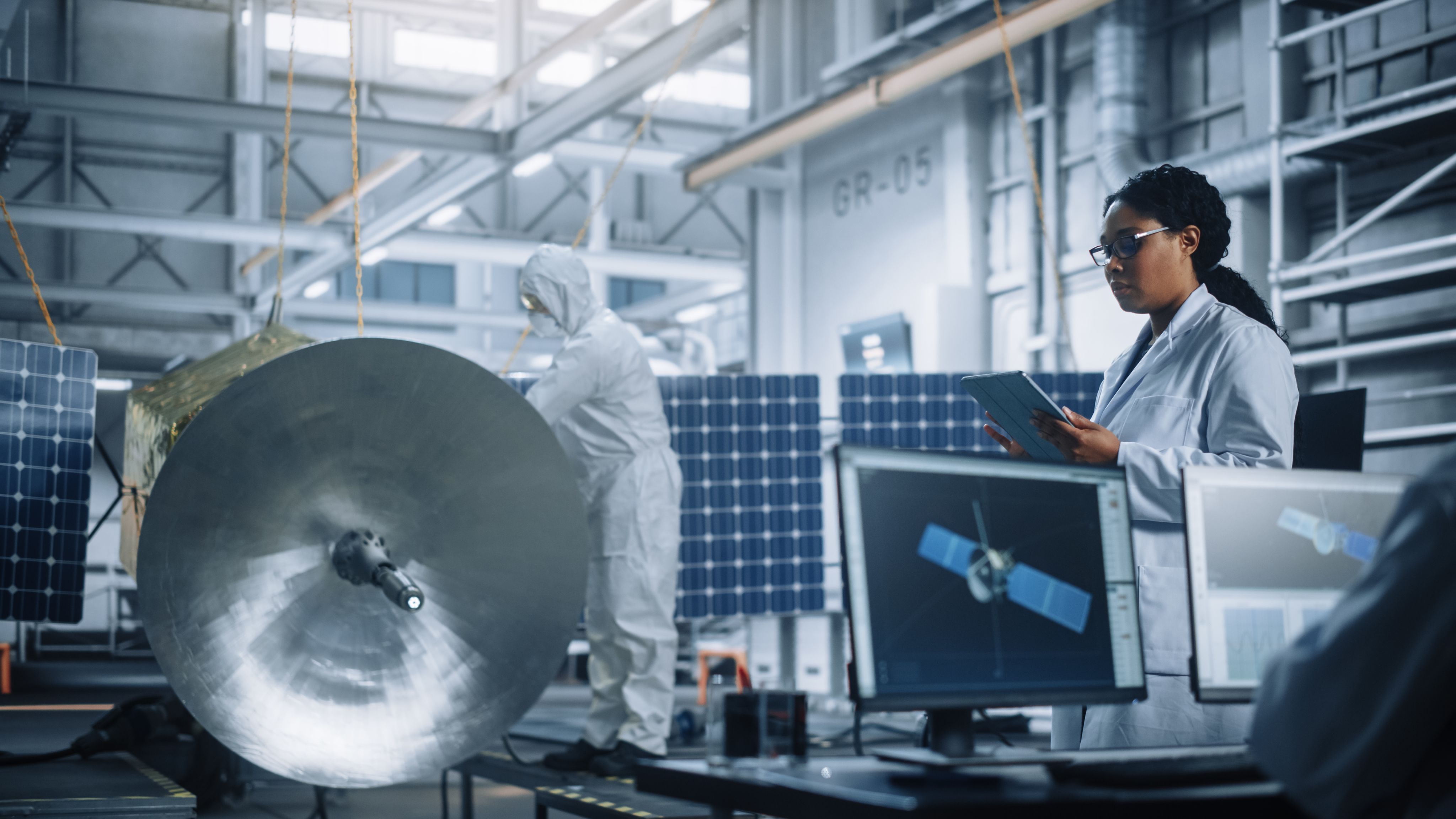
Disclaimer
Graphene Innovations Inc. Manchester (GIIM) is a company spun out from The University of Manchester led by alumnus and entrepreneur Dr Koncherry and based at the Graphene Engineering Innovation Centre (GEIC). The new company plans to accelerate a full range graphene-based innovations, including the space habitat project.
The partnership with the GEIC enables GIIM to equip a private lab, which features a pilot advanced manufacturing facility to make and form pioneering components for the space habitat.
GIIM is part of the global group Graphene Innovations Inc. (GII), led by entrepreneur investors Tom Hirsch (CEO and Growth Officer) and Mark Diamond (Chairman). Dr Koncherry is Chief Technology Officer (CTO) for GII and has also taken up the post of CEO (UK, Europe and Middle East), for Manchester-based GIIM and in this role his portfolio will include his existing start-ups, including SpaceBlue (recycled rubber flooring) and Graphene Space Habitat Limited working in partnership with global architects Skidmore, Owings and Merrill (SOM) for design and engineering concept.
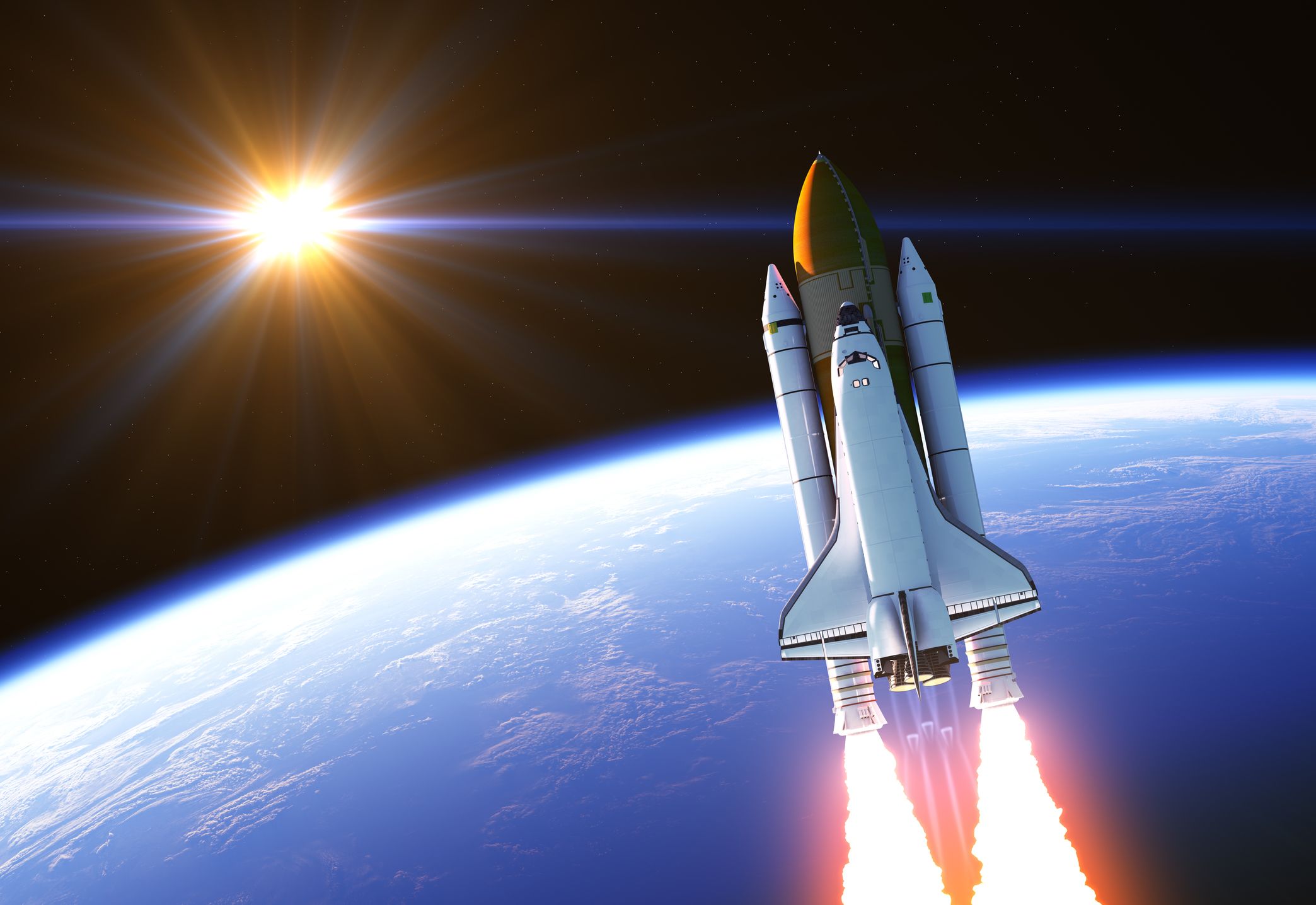
How can understanding astronaut psychology benefit us all?
Professor Emma Barrett and Dr Nathan Smith

Plans are underway for a permanent base on the Moon and human missions to Mars. These missions will be challenging for crew members and supporting the search for ways to maintain physical and psychological wellbeing and promote high performance is key. Research from The University of Manchester offers valuable lessons for surviving in extreme conditions and, indeed, for everyday life.
Living in the extreme
Simulation and analogue studies are helping us understand coping with the challenges of living in extreme environments. Over the last decade, we have examined participants’ experiences, including conducting scientific fieldwork in some of the most inhospitable places on Earth, climbing mountains, crossing deserts, and training for and participating in space missions.
Research from The University of Manchester has provided insight to the motivations of people who choose extremes and how they prepare for and cope with stress. This knowledge is being used for the selection, training and mission support of astronauts and cosmonauts.
Along with Manchester Metropolitan University, we worked on a project focused on stress and coping in a long-duration space mission. Participants in the SIRIUS-21 simulation, run by NASA, ESA and the Russian Academy of Sciences, completed measures that allowed us to track experiences during a 240 day isolation mission in which they carried the same tasks as future space missions. As part of an ESA task force, we are drawing up recommendations for the design and delivery of simulation studies so future studies replicate the experience of a space mission accurately. In another study, we are helping NASA validate a survey tool for tracking and monitoring crew function, which could inform timely interventions that optimise performance and reduce risks in future space missions.
Supporting regulatory flexibility
A key finding from the research is how stress fluctuates during a mission. We asked expedition-goers to record their coping strategies, for instance, focusing on the present, talking to team members, or keeping their emotions to themselves.
Previous research suggested some coping strategies are better than others. However, results show experienced expedition-goers often have several coping strategies and engage in ‘regulatory flexibility’, where strategies are matched to particular stressors or combinations of stressors. This means that some apparently contradictory strategies – sharing or bottling up emotions, for instance – are not ‘good’ or ‘bad’ in themselves, but either may be appropriate depending on the context.
One of our projects is designed to support people with less experience of extreme environments to develop regulatory flexibility. Using an app we created – the ‘DRIFT application’ – expedition-goers track their mood, performance and experiences, and based on their data, the app suggests coping strategies, and videos of experienced expeditioners describing how they coped. Pilot testing indicated this was a valuable way of tracking emotional progress and accessing personalised support. Space missions will continue to track behaviour and wellbeing, and tools like DRIFT support interventions with real-time feedback and suggestions.
Lessons for lockdowns
This research can also be applied to everyday experiences. As the world locked down in 2020 to slow the spread of COVID-19, millions of people found themselves isolated and confined. Dealing with isolation and confinement is key to surviving and thriving in space, and although the physical context is very different, the psychosocial demands astronauts encounter aren’t so different to lockdown.
Fortunately, these studies of how people cope in extreme environments offers strategies we can all use. For instance, it can take a week or two for astronauts to adjust to their ‘new normal’, both when joining a new mission, and when leaving it. Their adjustment is helped by having routine and keeping busy, facilitating a sense of control and consistency. So although the initial stages of a lockdown can be stressful and uncertain, it’s useful to know this is usually temporary, and a routine can reduce stress and anxiety. It can also be comforting to know that low mood and a lack of motivation are common in isolated and confined conditions but can be alleviated – small celebrations can lift moods and foster a sense of togetherness.
Particularly in the early days of the COVID-19 pandemic, many people experienced high levels of fear and anxiety. We learn from people in extreme environments that a good way to avoid becoming overwhelmed is to focus on the most important, achievable, and immediate tasks.
One of the most damaging stressors in space is being in close proximity with the same people for long periods of time. Astronauts, in common with members of other ‘extreme’ teams, often agree to open and honest conversations, to resolve problems before they lead to tension and arguments. The same advice can be applied to isolating with others in lockdown.
Supporting frontline workers during the pandemic
During COVID-19, healthcare and other frontline workers faced a prolonged period working under unprecedented physical and psychological stress, and needed robust and practical guidance as quickly as possible. We established an informal working group of academics and practitioners, and worked with the NHS Response Team to identify requirements, producing a series of user-friendly, evidence-based briefs that were shared with first responders throughout the UK. Feedback was extremely positive and the work was promoted by international healthcare networks including the World Health Organisation and the Johnson & Johnson Institute. The briefs remain available and will continue to be updated. This contribution was possible because of extensive research on performance under stress, and our global network of collaborators.
Promoting wellbeing through adventure activities
Our work also supports public policy objectives through engagement with grassroots adventure communities that reach out to those under-represented in adventure activities. We’ve shared research with groups like Adventure Mind and the Women’s Adventure Expo to support and inspire people to step into adventurous activities, especially women, people from disadvantaged socio-economic backgrounds and minority ethnic communities, and those facing physical and mental health challenges. What constitutes an ‘extreme’ environment for some will seem ordinary to others: a weekend of wild camping, or a solo trip abroad. But all adventurers start somewhere, and overcoming fear of the unknown and building skills and confidence in increasingly challenging contexts is a vital component of developing resilience and improving mental health.
Information for policymakers
Although studying astronauts and other ‘extreme operators’ may initially appear relevant to very few people, our research highlights the value of adventurous activities to building life-skills and promoting psychological wellbeing. And, as climate change contributes to increasingly extreme conditions, our research will become increasingly relevant to everyday life.
Key policy considerations:
UK research efforts on coping in extreme conditions are currently underfunded and poorly coordinated, and few mechanisms exist to translate that research into practice. The UK Space Agency can only support a few small projects on human activity in space, and other funding, especially in the social sciences, is limited. More substantial funding is needed as a matter of urgency.
We need a vehicle through which to coordinate the production and translation of research to help us leverage the most benefit from studies. US scholars benefit from the NASA-supported Translation Research Institute for Space Health (TRISH), which develops, manages, and exploits human science research both on-orbit and on-Earth. Support for a similar centre in the UK, which coordinates the translation of human and social science findings from Earth to space and back again, could make a significant difference to developing evidence-based support, not just for astronauts, but for people from all communities.
Professor Emma Barrett OBE is Professor of Psychology, Security, and Trust at The University of Manchester, and Director of SPRITE+, the UKRI Digital Economy National Network for Trust, Identity, Privacy and Security. Her research and teaching interests are psychology and security, and the psychology of extreme environments. She is the co-author of Extreme: Why some people thrive at the limits (OUP, 2014).
Dr Nathan Smith is an Associate Professor of Security, Behaviour and Emerging Technology at Coventry University. His research is focused on workforce resilience and performance in extreme environments. Nathan is currently writing a book on human thriving in extremes for MIT Press.
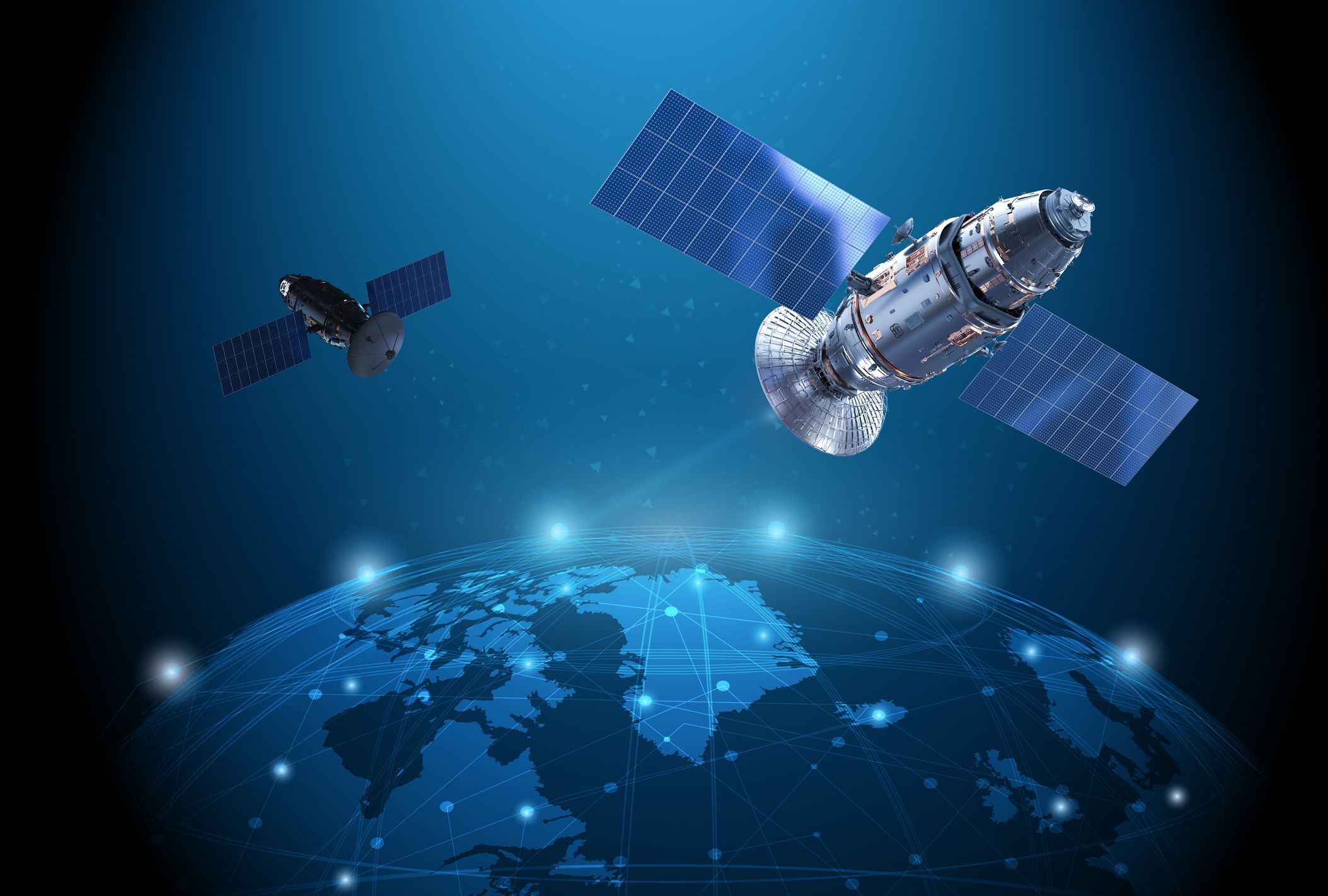
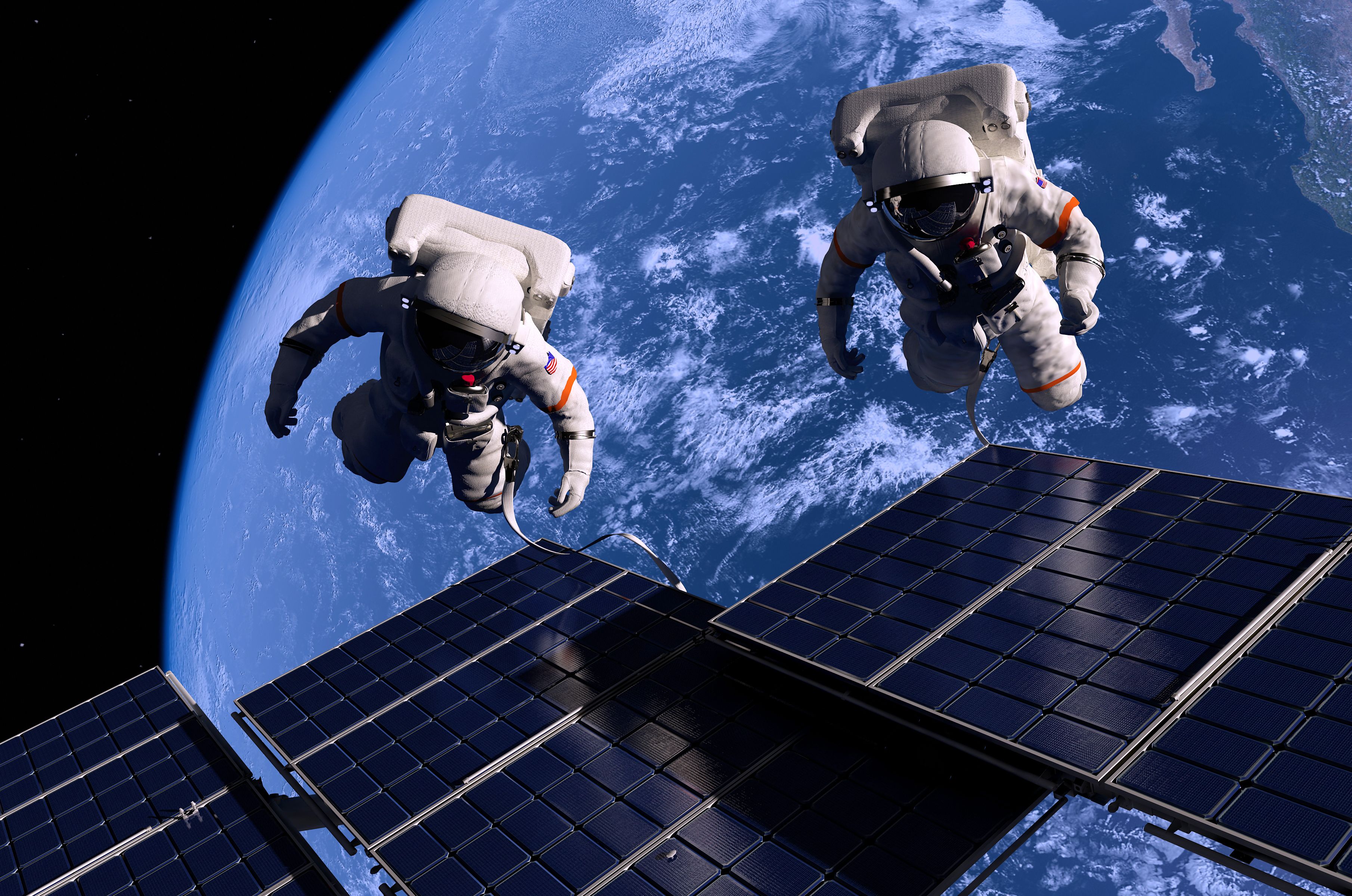
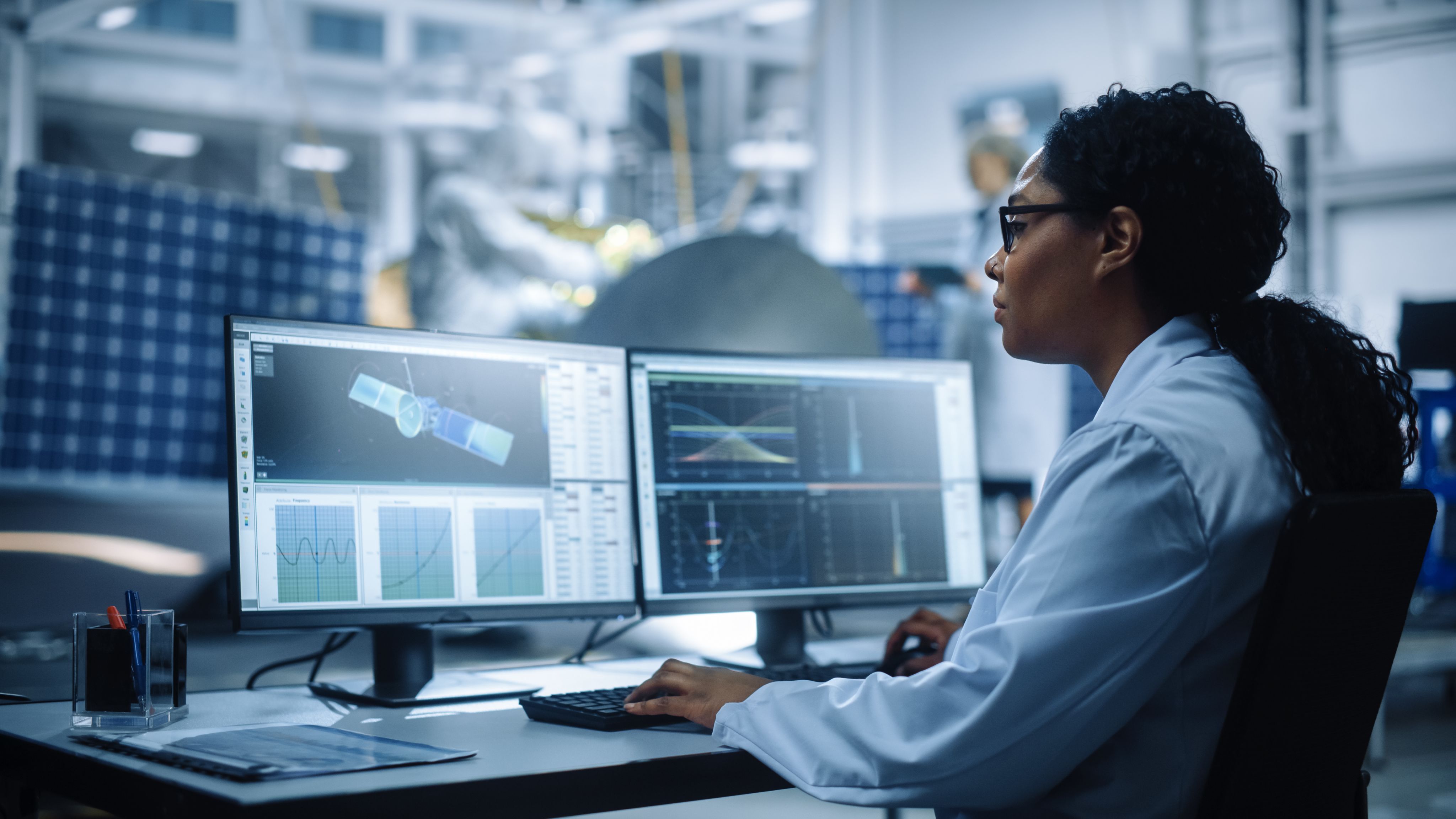
Case Study: Jodrell Bank Centre for Astrophysics, The University of Manchester
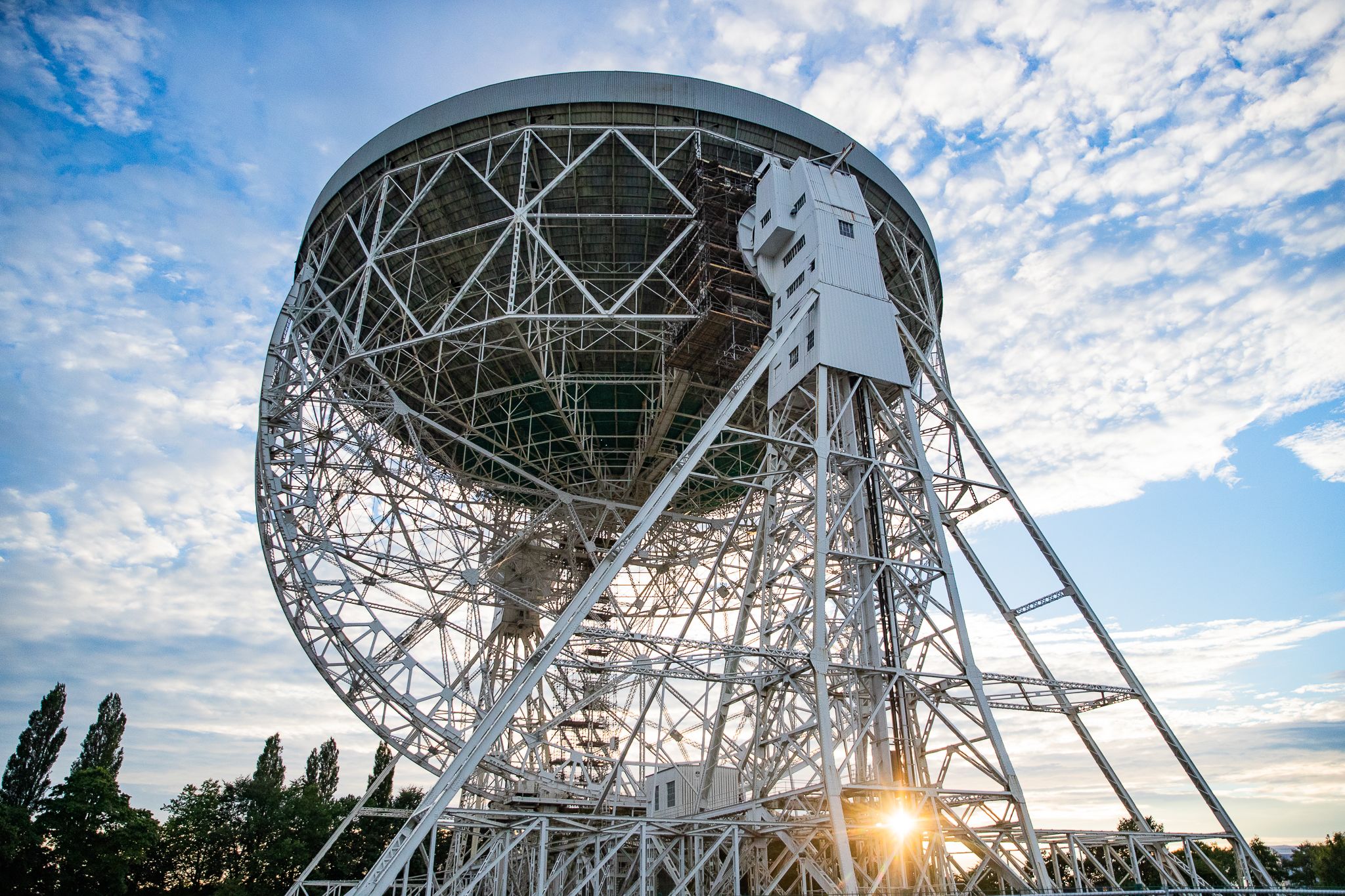
A history
The story of Jodrell Bank began in 1945 when Bernard Lovell came back to The University of Manchester to observe cosmic rays after the war.
A quiet observing site was required, and the University's botanical station at a little-known place called Jodrell Bank, 20 miles south of Manchester, was the ideal location. Today, Jodrell Bank is a leading radio astronomy facility.
Jodrell Bank is dominated by the 76-metre Lovell Telescope, conceived by Sir Bernard Lovell. He worked with engineer Sir Charles Husband to build the telescope which has become an icon of British science and engineering and a landmark in the Cheshire countryside.
A hugely ambitious project
The telescope was by far the world’s largest when it was completed in 1957, and within days tracked the rocket that carried Sputnik 1 into orbit, marking the dawn of the space age. It is still the third largest steerable telescope in the world.
Today
The Observatory continues to play a major role in astronomical research. It is now home to the e-MERLIN array of seven radio telescopes spread across the UK. Based on the techniques of linking telescopes over long distances pioneered by the team which Sir Bernard assembled at Jodrell Bank, the network is now connected by a high-speed optical fibre network making it one of the most powerful telescope arrays in the world.
Although the work of the observatory is largely focused on astronomy, Jodrell Bank is still involved in some aspects of space research – in particular, it collaborates with other NATO partners and the Ministry of Defence’s DSTL (Defence Science & Technology Laboratory), as part of a multi-national Space Situational Awareness project. This work involves developing techniques for precision tracking of satellites and other spacecraft, and the debris they produce as they deteriorate in space – ‘space debris’ is a growing problem that threatens crewed spacecraft such as the International Space Station and may even limit our access to low-Earth orbit (LEO) if we don’t do something about it soon. Knowing the exact location of all the debris orbiting above our heads is going to be crucial in order to maintain the safety and operation of LEO satellites and crewed spacecraft.
With enormous investments being made in huge satellite constellations such as Starlink and OneWeb, tracking all these objects simultaneously is becoming an enormous challenge. It is estimated that by the end of the decade around 100,000 satellites will be in low-Earth orbit, and these mega-constellation communications systems are likely to completely transform the night sky. Astronomers at Jodrell Bank are working with these large commercial projects in order to reduce their impact on the night sky and their effects on astronomical observations, including radio astronomy.
In 2012 the international headquarters of the SKA Organisation moved to Jodrell Bank. When completed, the Square Kilometre Array (SKA) will be the world's largest telescope. Combining thousands of dishes and other receivers spread across thousands of kilometres, the SKA itself will be sited in Africa and Australia. In 2021, the SKA Observatory was formed as an intergovernmental organisation responsible for building and operating the SKA telescope. The new SKA Organisation HQ building at Jodrell Bank is a sign that the site will remain at the forefront of radio astronomy for many decades to come.
International recognition
In July 2019, in recognition of its internationally significant heritage, science and cultural impact, Jodrell Bank Observatory was awarded UNESCO World Heritage Site status and has been inscribed on the World Heritage List.
Jodrell Bank now joins a prestigious group of sites across the globe recognised by UNESCO’s international community as sites of Outstanding Universal Value. The World Heritage Site inscription acknowledges Jodrell Bank’s tremendous scientific endeavours and its role in achieving a transformational understanding of the Universe. It places the site on an equal footing with the likes of Stonehenge and the Taj Mahal and represents an enormous accolade not only for Jodrell Bank and The University of Manchester, but also for the region, and the UK as a whole.
Festival space
Jodrell Bank is not only home to cutting edge astronomical research but it also hosts the annual multi-award winning Bluedot music, science and culture festival. With hundreds of artists and speakers from across the pantheon of arts, culture, music and science performing every year, it truly is a festival unlike any other.
Today the Lovell Telescope plays a key role in world-leading research on pulsars, testing our understanding of extreme physics including Einstein's General Theory of Relativity.
“Jodrell Bank has a long heritage of contributing to the UK’s competitive edge in space science and technology. While our mission remains focused on continuing our global leadership in radio astronomy-related research, we’re excited by the UK’s Civil and Security ambitions in space and the challenges this represents. We look forward to participating in these new initiatives, training and inspiring the next generation of young scientists and remaining a key asset to UK Science and Technology.”
Professor Michael A. Garrett, Director of Jodrell Bank Centre for Astrophysics
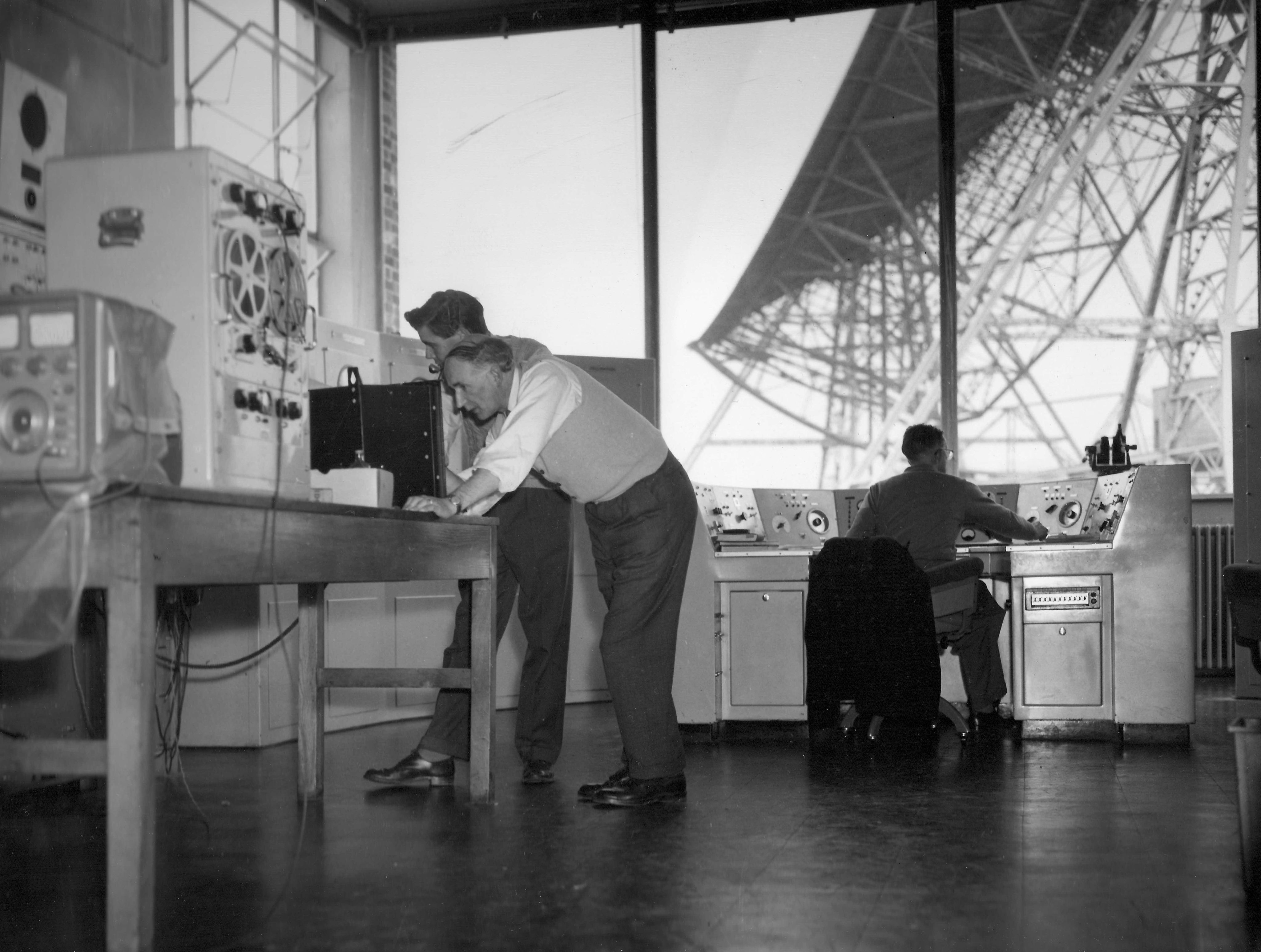

Smart materials: how can programmable materials solve space challenges?
Professor Coskun Kocabas

2020 was a year of quiet, with much of the world staying indoors to tackle the COVID-19 pandemic. 500km above us, however, the picture was very different – the low earth orbit (LEO) was busier than ever. In 2020, SpaceX launched more than 800 satellites to build a mega-constellation of 42,000 satellites, while in New Zealand, a country with no national space programme, a start-up company launched reusable rockets from its own launch pad. New concepts – such as vertical landings, 3D-printed rocket engines, and high-speed satellite communications – are driving a paradigm shift in the space industry. This once conservative industry funded by governments is transforming into an entrepreneur race. Survival in this highly competitive sector demands the accelerated implementation of emerging technologies.
Smart thermal control
Advanced materials with programmable functionalities will play a key role for overcoming challenges in the emerging space sector. At the National Graphene Institute (NGI), my group is working on two key areas where graphene-based devices provide unique adaptive capabilities. The first application is adaptive thermal management of satellites that experience temperature extremes in orbit. Currently available techniques are bulky and involve high power consumption, limiting the satellite’s power budget and increasing the payload cost.
In 2018, we published research results showing the possibility of adaptive thermal radiation from graphene-coated surfaces. Graphene is an electrically tuneable material, and our work demonstrates that, due to this multispectral tunability, it can enable dynamic thermal management of satellites in outer space.
To realise the potential of this discovery, we built a patent portfolio and created a spin-off company, SmartIR Limited, to commercialise a cost-effective solution that will enable satellites to regulate thermal radiation on demand. This technology will enable regulating satellites' temperature adaptively by changing the emissivity and reflectivity of its surface. Our current focus is on the testing and validation of this technology to meet the requirements of the space industry.
Smart antennas
One of the biggest innovations enabling high-speed satellite communications is the new generation of smart antennas which contain hundreds of programmable small antenna elements. Unlike old satellite dish antennas, these smart antennas can trace fast-moving satellites on LEO and seamlessly switch communication between them, picking up a new satellite as the previous disappears over the horizon. Many companies are now battling for this market using several different approaches, including liquid crystal materials and phased arrays. SpaceX, for example, uses costly phased array technology which is commonly used for military scale radar systems. The challenge is to achieve programmable antennas elements at a reduced cost. We have developed graphene-based smart microwave surfaces that can change their microwave reflectivity. The operation frequency of these antennas can be extended to terahertz frequencies, providing a much higher data rate. This will enable new antenna technologies, especially for high-speed communications between the satellites.
International collaborations
There is a promising future for adaptive materials in space applications. As an academic, I have significantly benefited from EU funding and our university's infrastructure for graphene research. This cutting-edge infrastructure is supported by the UK government and the European Regional Development Fund. Participation in the EU’s funding programme for research and innovation is vital to maintaining our competitiveness for emerging technologies. The recent delay in the UK’s participation leads to big uncertainties for the future of space research and development.
Attracting exceptional people
Cutting edge innovations require exceptional skills. The shortage of skilled people is the most pressing issue for R&D. Especially after Brexit, attracting European students and researchers has been very difficult due to the lengthy and expensive visa process. Although the government introduced a new immigration system, including the Innovator Visa and the fast-track Global Talent Visa, it is still far from being attractive for the best talents. Simplifying the immigration system for skilled workers will significantly improve attractiveness. Furthermore, we should invest in home-grown talents. This can be achieved by interdisciplinary graduate programmes such as Centres for Doctoral Training (CDT) for space technologies. These educational programmes will provide a steady pipeline of skilled talent to create and support local companies. In addition, quotas for international students in these programmes must be increased.
Sustainable space
As the space industry grows, its problems will grow as well. Astronomers have raised concerns about light pollution on ground-based astronomy due to the scattered light from satellites. Recently, SpaceX painted its new satellites to make them less visible; however, making them completely dark introduces new thermal management challenges. Adaptive optical materials could provide new solutions for the light pollution. Space sustainability is another emerging area of concern as space becomes increasingly congested. Collisions between satellites and space junk are already a concern, as demonstrated by the recent near-miss events between the Chinese Space Station and Starlink satellites. Minimising waste and finding solutions to space debris are some of the challenges material scientists need to tackle. Materials design and innovation need to be prioritised to tackle these growing concerns.
Prioritising funding
The UK government recently published the National Space Strategy outlining the goals and strategies for leadership in the emerging space sectors. There is much to do if the UK is to grow as a space nation and be an innovative and attractive space economy.
The critical decision is how to allocate resources between the expensive launching business and long-term Research and Development. Strategic investment in high-growth areas and R&D should be prioritised over the low margin yet expensive launching business.
Manchester has a strong position as a global leader in advanced materials innovation. Repurposing the infrastructure and investing R&D in advanced space materials will lead to the creation of new technologies. The Graphene Engineering Innovation Centre (GEIC) and the Henry Royce Institute provide a unique innovation ecosystem to accelerate the process.
Coskun Kocabas is Professor of 2D Device Materials, The University of Manchester and National Graphene Institute. His research interests lie in the electronics, optical applications of 2D materials.
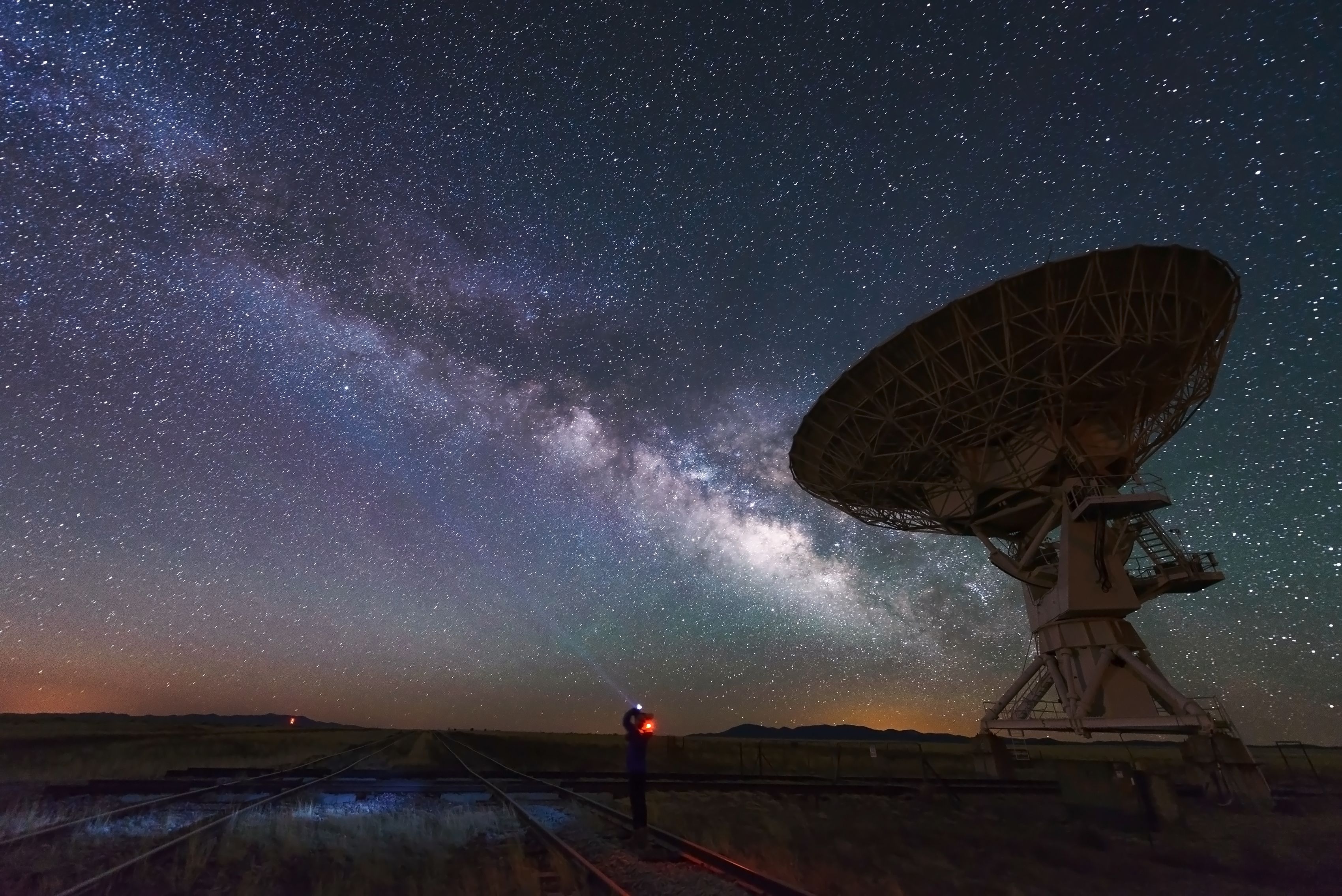


Competition and collaboration: the future of UK-China space relations
Molly Silk and Professor Kieron Flanagan

China’s increasing global influence is partly due to the successes of its indigenous space programme, with its civilian and military capabilities both now among the strongest in the world. In the recently released Defence Space Strategy, China’s space capabilities have been identified as a threat to the UK’s national security, but strategic collaboration between the UK and China in space could enhance bilateral relations while simultaneously strengthening trade between the two space sectors. What do we know about China’s space capabilities, and how can the UK pursue its national interests while maintaining a healthy relationship and learning from China’s growing expertise?
China’s space capabilities
China is on the way to becoming a world-leading space power by 2045. Some of its most public feats include placing taikonauts and space laboratories into orbit, and landing rovers on the Moon and Mars. Last year, China and Russia signed an agreement to cooperate on the construction of a lunar research station, planned to be operational by 2036. China has a considerable array of satellite programmes, most notably its BeiDou satellite navigation system, which now provides services globally. According to US intelligence reports, China also possesses a comprehensive military space programme, including ground-based lasers, kinetic-kill missiles, and orbiting space robots. As in other countries, the lines between China’s civilian and military space capabilities are sometimes blurred, with many of China’s space technologies holding dual-use potential. The US Space Force claims China is developing its space capabilities at “twice the rate” as that of the US, with the organisation’s vice chief warning China could overtake the US in this domain by the end of the decade.
Current UK space strategy and capabilities
The UK is focused on the economic and security importance of space. In April 2021 the government established a UK Space Command, which takes policy direction from both the National Space Council and the Ministry of Defence’s Space Directorate. The Prime Minister has committed £5 billion to the next generation of SKYNET military communications satellites. Similarly, in July 2020, the government took a £400 million stake in OneWeb, a company building a low earth orbit satellite ‘constellation’, comprising hundreds of small satellites. A further £1.4 billion has been allocated to the Space Command, and to the development of a Space Academy and a National Space Operations Centre (UK SpOC).
The head of the Ministry of Defence’s Space Directorate recently indicated SKYNET was no longer the sole focus of the UK’s defence space programme, with new emphasis on detecting, monitoring and tracking threats, constellations of space-based sensors for intelligence, surveillance and reconnaissance, digital communications, and on protective and defensive space capabilities. The National Space Strategy paper was released in September 2021, and an accompanying Defence Space Strategy in February 2021. With this strategic framework in place, how should the UK approach space-based opportunities and challenges from China?
Chinese challenges to UK interests
The potential opportunities to trade alongside and learn from Chinese space developments are clear, but the challenges China might pose to the security of the UK’s space-based assets are more complex. In the UK’s recent security and defence review, China is labelled a “systemic challenge” and the “biggest state-based threat” to the UK’s national security and interests in the Indo-Pacific. Space-based technology is expected to be central to intelligence and operations in the region. It has been suggested that China already has the capabilities to attack UK satellites and ground stations through kinetic and non-kinetic physical weapons, electronic weapons, and cyber-attacks, making outcomes in the face of potential regional clashes uncertain.
China’s emphasis on ‘military-civilian fusion’ (MCF) means innovation in the country’s private space sector could be used to further enhance the capabilities of the People’s Liberation Army (PLA). This implies that UK space corporations collaborating or selling products to Chinese partners could risk technologies being co-opted not only by emerging Chinese space corporations for trade purposes, but also by the PLA for military purposes. This could cause legal and reputational issues for UK companies.
Policy recommendations
Promote deeper integration between China policy experts and UK SpOC:
The UK’s understanding of China’s space strategy and MCF uses of UK space technologies could be enhanced through increased cooperation between China policy and strategy experts, and space experts at SpOC. A closer examination of the large body of untranslated Chinese martial thought, strategy and dialogue could give a clearer understanding of China’s plans for the military use of space. A better understanding could be a platform for careful collaboration.
Increase cyber-resilience:
The significance that China places on its reputation among the international community as a peaceful and responsible leader suggests it would prefer to conduct operations that are difficult to attribute and that remain beneath the threshold of overt conflict. While it is important to ensure a strong defence against kinetic physical attacks, cyber-attacks on satellites are more likely to be deployed. Increased cyber-resilience of space-based assets is essential, and can be guided through the ‘own-collaborate-access’ framework.
Explore space-based initiatives for Indo-Pacific engagement:
In the face of China’s assertiveness in the Indo-Pacific, the UK has recognised it must increase engagement in the region in pursuit of its geopolitical interests. UK space expertise has the potential for wider diplomatic uses that may lessen Indo-Pacific reliance on China. While China is able to offer inexpensive satellite and launch technologies, there is room for the UK to promote its own space services internationally by highlighting its strong reputation and unique expertise, as well as through scientific collaboration, aligning with the post-Brexit ‘Global Britain’ agenda.
Pursue strategic collaboration with China:
Despite security concerns, the growth of China as a major science and technology power is an inescapable reality, and the UK cannot avoid some space-based collaboration with China if it wishes to stay at the forefront of technological development. The dual-use nature of many space technologies means this kind of collaboration would need to be decided on a case-by-case basis, with regular assessments of China’s space capabilities and the implications for UK security.
Adaptable regulation is key
China’s relentless pursuit of science and technology leadership presents opportunities as well as threats to the UK. The strategic importance of space technology in the 21st century cannot be overstated, and with each collaborative venture, policymakers must be fully aware of the geostrategic implications of knowledge and technology transfers to China. However, cutting ourselves off completely from China’s civil space activities and growing space science would be unwise in technological and industrial terms. Any regulation of future collaborations must be realistic, forward-looking and remain adaptable to changing circumstances.
Molly Silk is a doctoral researcher based at the Manchester Institute of Innovation Research at The University of Manchester. Her research examines Chinese space policy and diplomacy, and she is also interested in the impacts of science and technology developments on security and defence.
Kieron Flanagan is Professor of Science and Technology Policy at The University of Manchester. He has worked on all aspects of science, technology and innovation policy, and has a special interest in the international dimensions of science and technology.


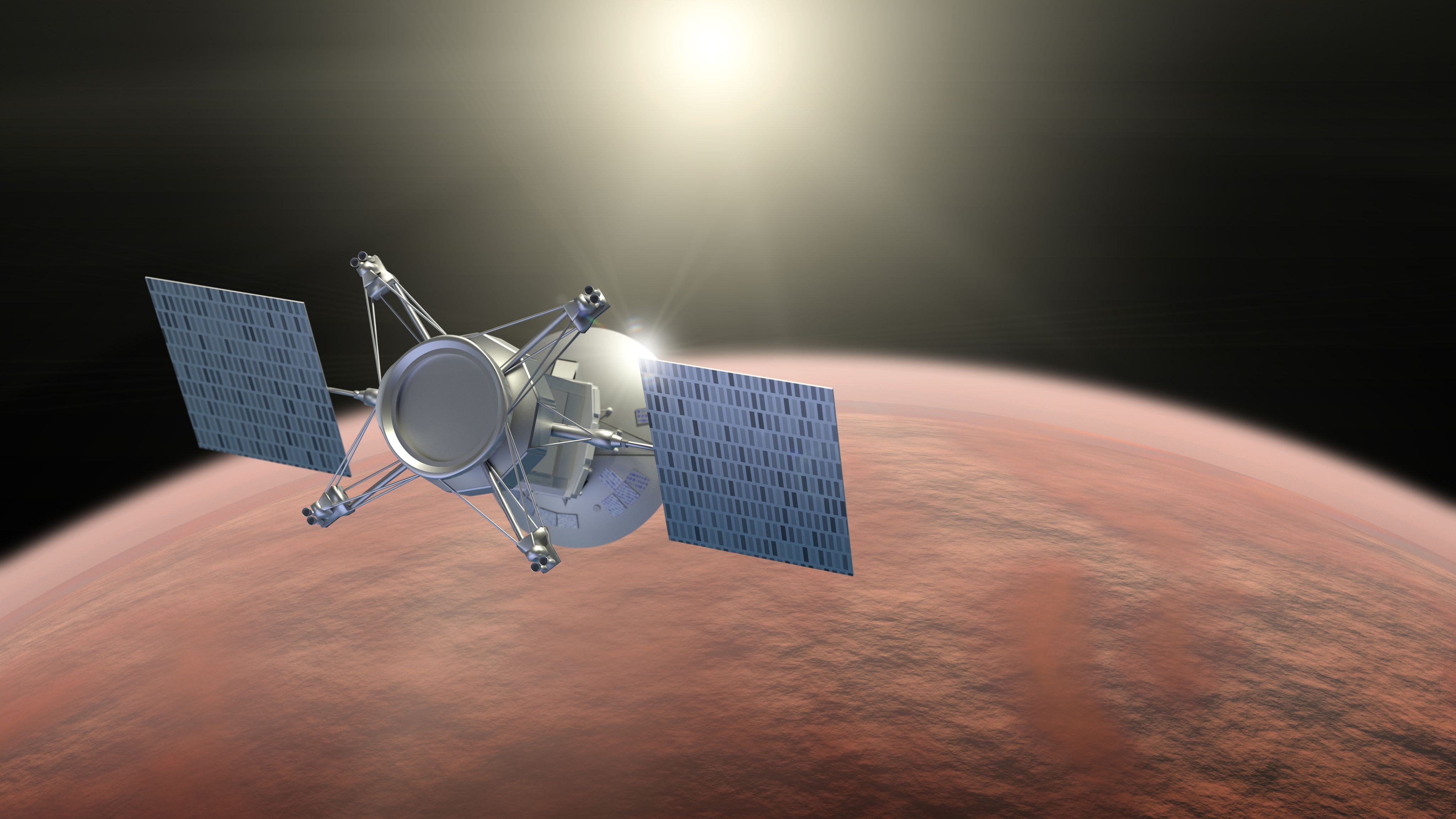
Green space: off-world habitation could stimulate sustainability on Earth
Dr Aled Roberts
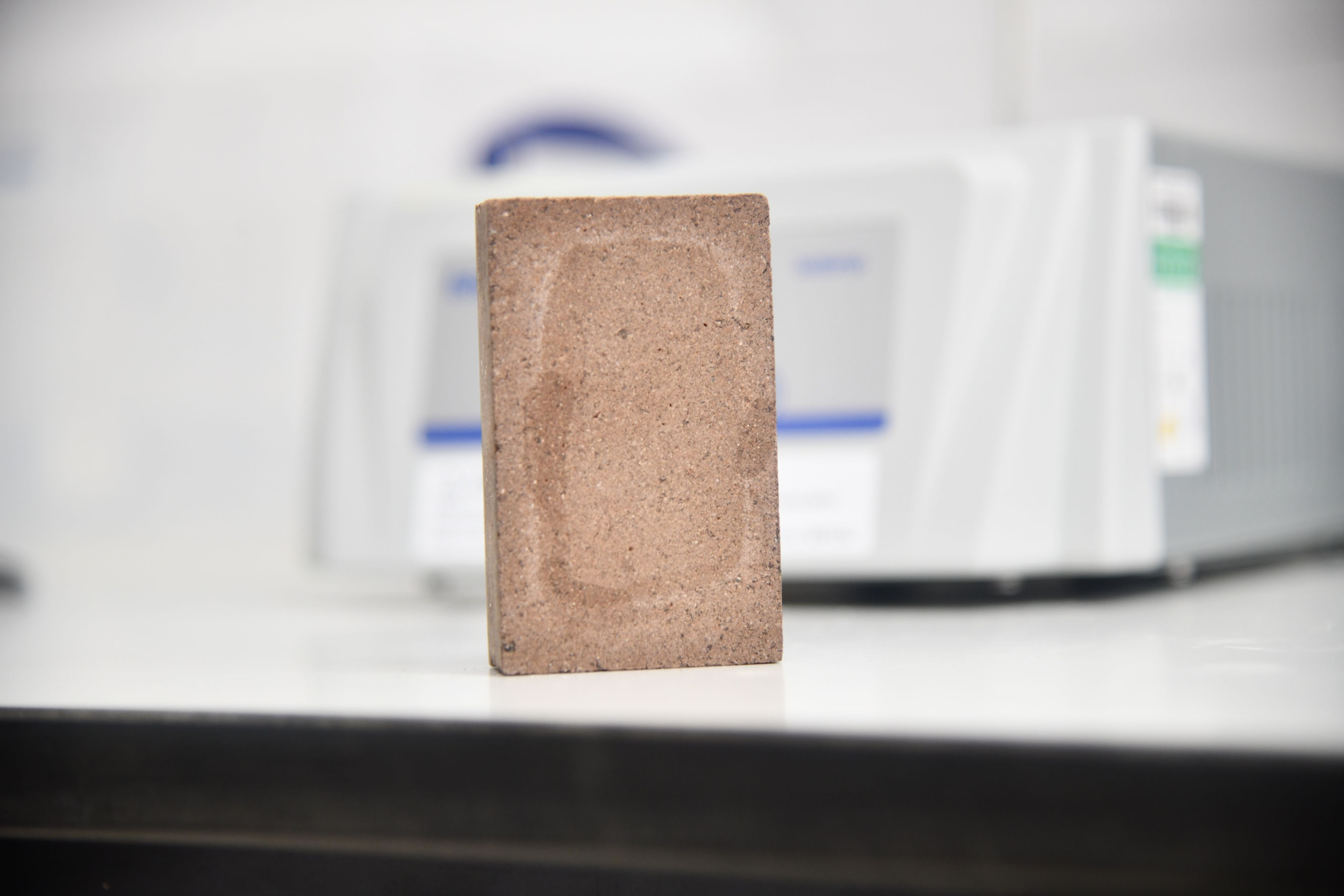
NASA’s Artemis program aims to return humans to the lunar surface by 2025, before establishing a sustained human presence on and around the Moon by the end of the decade. This so-called Lunar Gateway will then be used as a staging point for future missions to Mars. With estimated project costs approaching $100 billion, a criticism of this endeavour is the extremely high price tag, especially since the allocated public funds could be redirected to more pressing causes on Earth – such as funding the development and deployment of green technologies. However, the goals of space exploration and sustainable development aren’t necessarily misaligned.
The fruits of space exploration
Although NASA’s Apollo program came with a similarly high price tag, at $280 billion after adjusting for inflation, the program fuelled giant leaps forward for numerous technologies which still have a positive impact to this day. These technologies include solar cells, miniaturised computer processors, advanced insulation materials, fuel cells and compact cameras.
Another offshoot from the historical investment in space has been modern satellite technologies. Not only are communication satellites crucial for our modern way of life, but Earth observation satellites are a vital tool for combating climate change by monitoring discrepancies between actual and reported CO2, methane and other greenhouse gas (GHG) emissions, and the monitoring of forestry, agriculture and other land use – a sector that accounts for 24% of global GHG emissions.
Sustainable technologies
Future extra-terrestrial colonies on the lunar and Martian surfaces will require an unprecedented degree of resourcefulness, circularity, and sustainability as a matter of survival. Almost every substance will have to be reused, repaired and recycled to maximise utility and minimise waste. There will be no disposable materials on Mars, and every piece of equipment will have to be ultra-reliable, since any chance of logistical resupply from Earth would be extremely costly and impractical. This notion of hyper-resourcefulness and circularity promises to result in offshoot technologies that will promote sustainable development on Earth.
Off-world construction materials and processes
One of the biggest unsolved challenges with sustained off-world human habitation is the need to develop viable construction materials and processes. Construction on Earth requires a multitude of diverse materials with complex supply chains, assembled by numerous specialists through laborious processes. Such an option is not available off-world, so new material technologies and construction methods will need to be developed.
Moreover, any habitat outside of Earth’s protective magnetosphere will require thick walls and ceilings to protect against solar and cosmic radiation. Given it currently costs over £1 million to send a brick’s worth of material to Mars, it’s not economically feasible to transport bulk construction materials from Earth. Instead, local resources – namely lunar or Martian soil (or regolith) – will need to be employed.
This regolith, which is a fine powder, will need to be transformed into a solid monolithic material to prevent erosion from high-velocity exhaust plumes (Lunar surface) and dust storms (Martian surface). Although several solutions to this challenge have been proposed, such as melting or sintering regolith into glassy bricks, most have serious flaws such as extremely high energy use, necessitating additional energy production capacity, or the need for heavy processing equipment – both of which would add significantly to launch mass and mission cost.
A promising solution lies in the emerging transdisciplinary sector of encompassing biotechnology and materials science. Several bio-based or living construction solutions have been proposed as relatively low energy, feasible methods for the stabilisation of extra-terrestrial regolith into construction materials. Researchers at The University of Manchester recently proposed a solution using human blood proteins and urine to bind regolith into a concrete-like material. Termed Astrocrete, the researchers are now investigating plant-based biopolymers as alternatives to human blood.
Given that the construction sector accounts for 39% of anthropogenic CO2 emissions, any relatively green construction material technology developed for off-world habitats could potentially be employed as a sustainable alternative on Earth. This is particularly relevant in the light of COVID-19 recovery plans championed by the UK and other governments.
The UK’s National Infrastructure Strategy, published in November 2020, lays out a vision of new railway, roads and motorway junctions, and new energy infrastructure – much of it in the Midlands and the north of England. This was followed in March 2021 by the ‘Build Back Better’ plan for growth, which promises infrastructure projects delivered “better, greener and faster”, with infrastructure investment highlighted as “fundamental to delivering net zero emissions by 2050”. With similar plans from governments around the world, the UK – particularly the north-west of England – is in a unique position to nurture and export low-carbon, sustainable materials derived from space technologies.
The UK as a centre for green space technologies
The UK has a strong knowledge-based economy and is world-leading in the areas of space tech, materials science and biotechnology. The University of Manchester, which hosts the Henry Royce Institute for advanced materials research and innovation, as well as the Future Biomanufacturing Research Hub, is especially strong in these areas. These advantages make the UK, and especially Manchester, an ideal candidate to host the next Silicon Valley equivalent for off-world construction start-up companies and associated green technology offshoots.
Policymakers could promote the development of such an ecosystem, putting the UK in a good position to capitalise on the upcoming rush to develop and commercialise technologies associated with space habitation.
Other positive actions policymakers could take include:
Grants and other financial incentives to support academics with ‘hard tech’ business ventures; the long-touted ARIA body could take a leading role in this.
Encourage industry-academia collaborations and trans-disciplinary research through online platforms, subsidised conferences, showcases and other events.
Hosting competitions and prizes to help spearhead innovation and solve specific challenges.
Assist with communicating the benefits to the wider public, such as providing PR training to academics and recognising participation in outreach activities as important output for academics.
Dr Aled Roberts is a research fellow who specialises at the interface of materials engineering and biotechnology. He is based at the Future Biomanufacturing Research Hub within the Manchester Institute of Biotechnology.
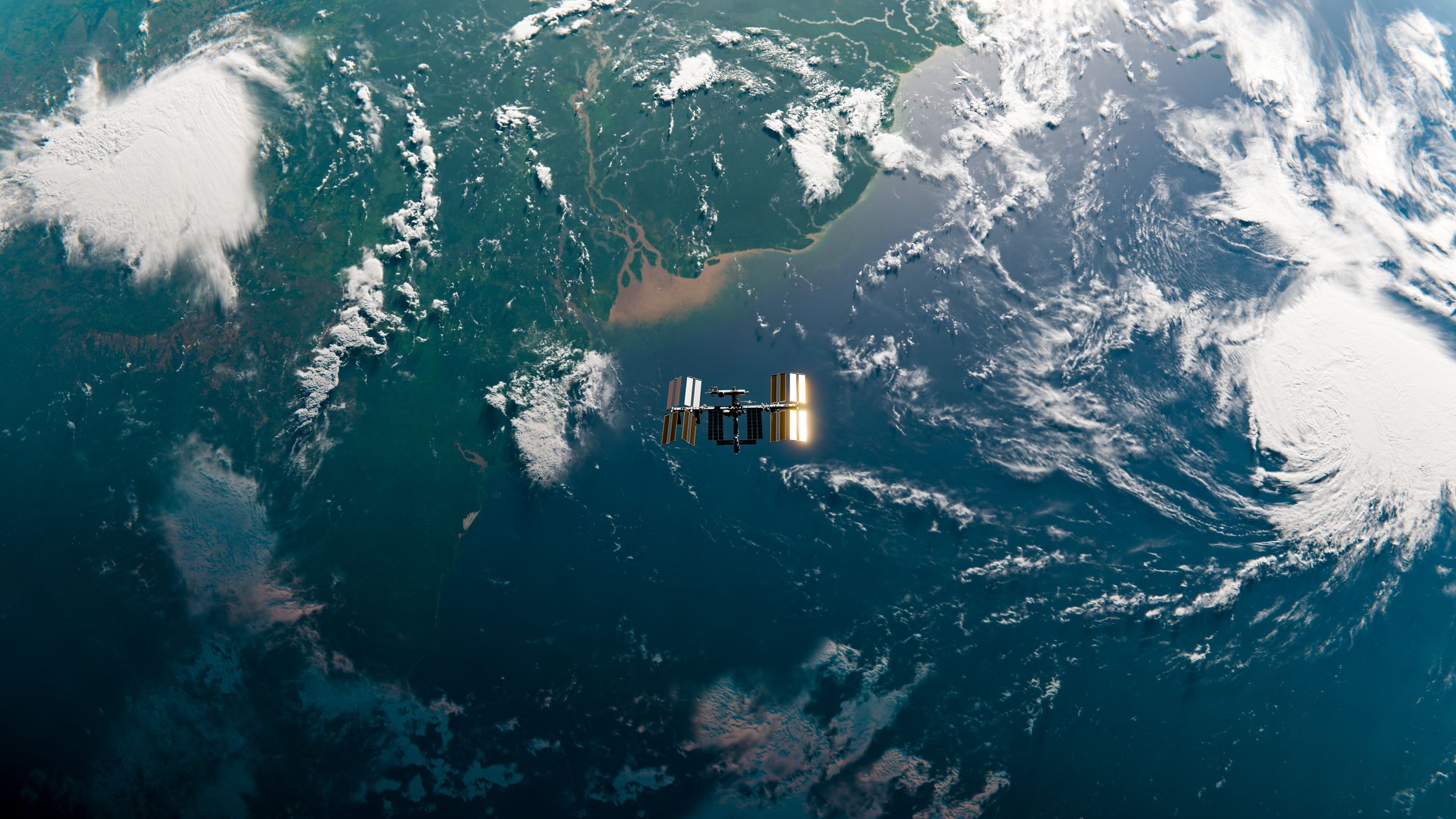
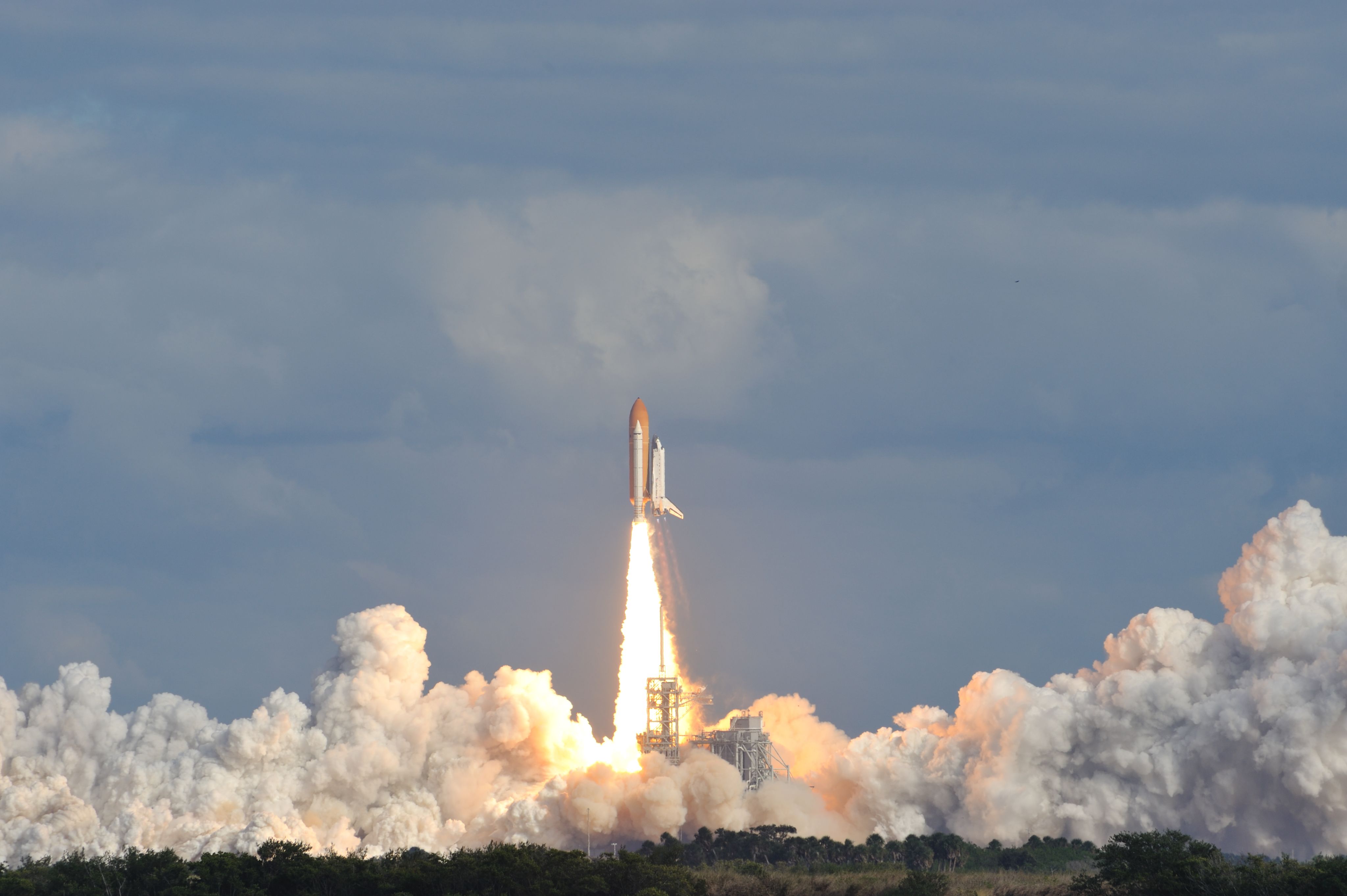
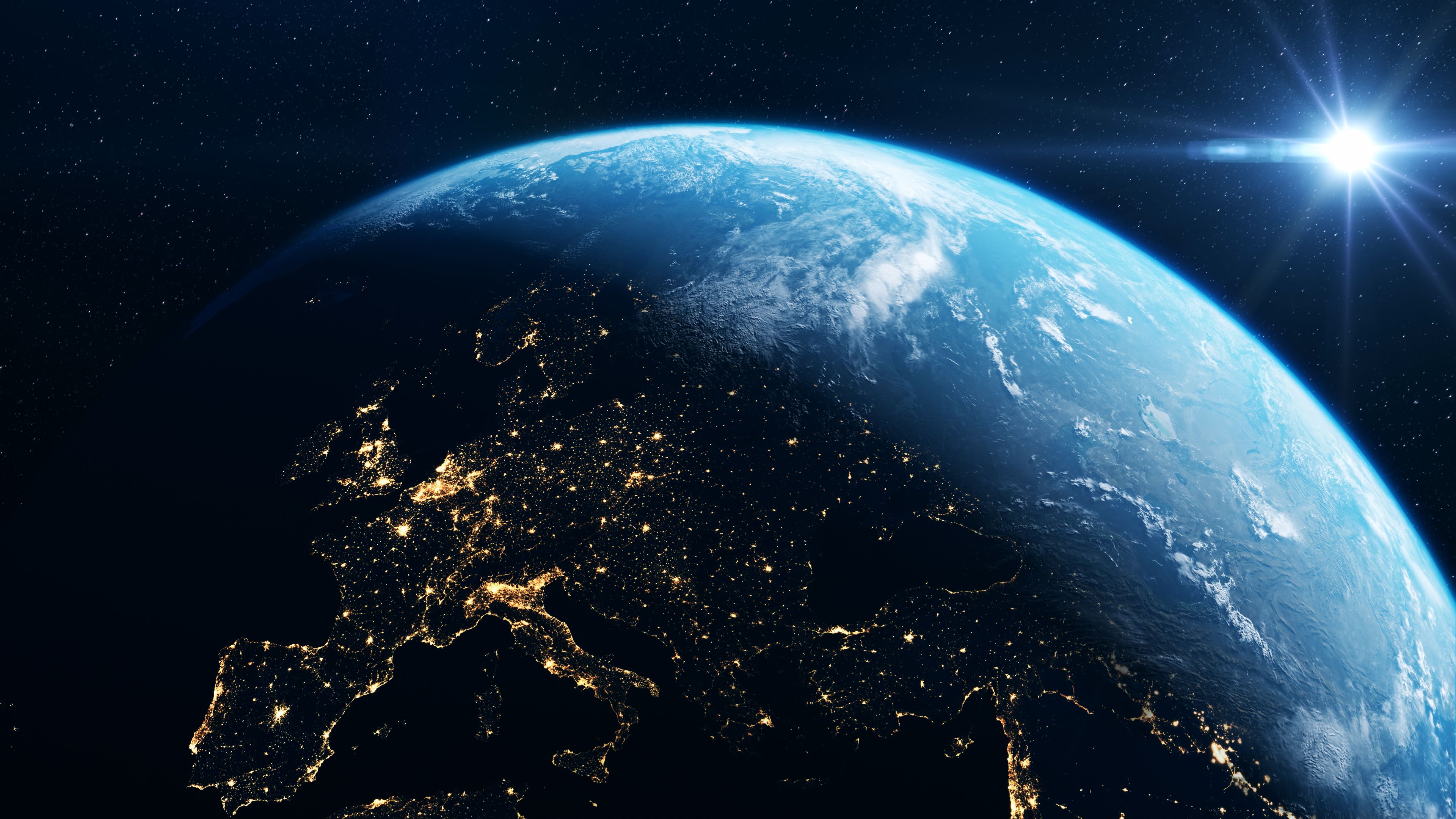
Space rocks: the need for an international approach to space resource utilisation
Thomas Harvey and Professor Katherine Joy
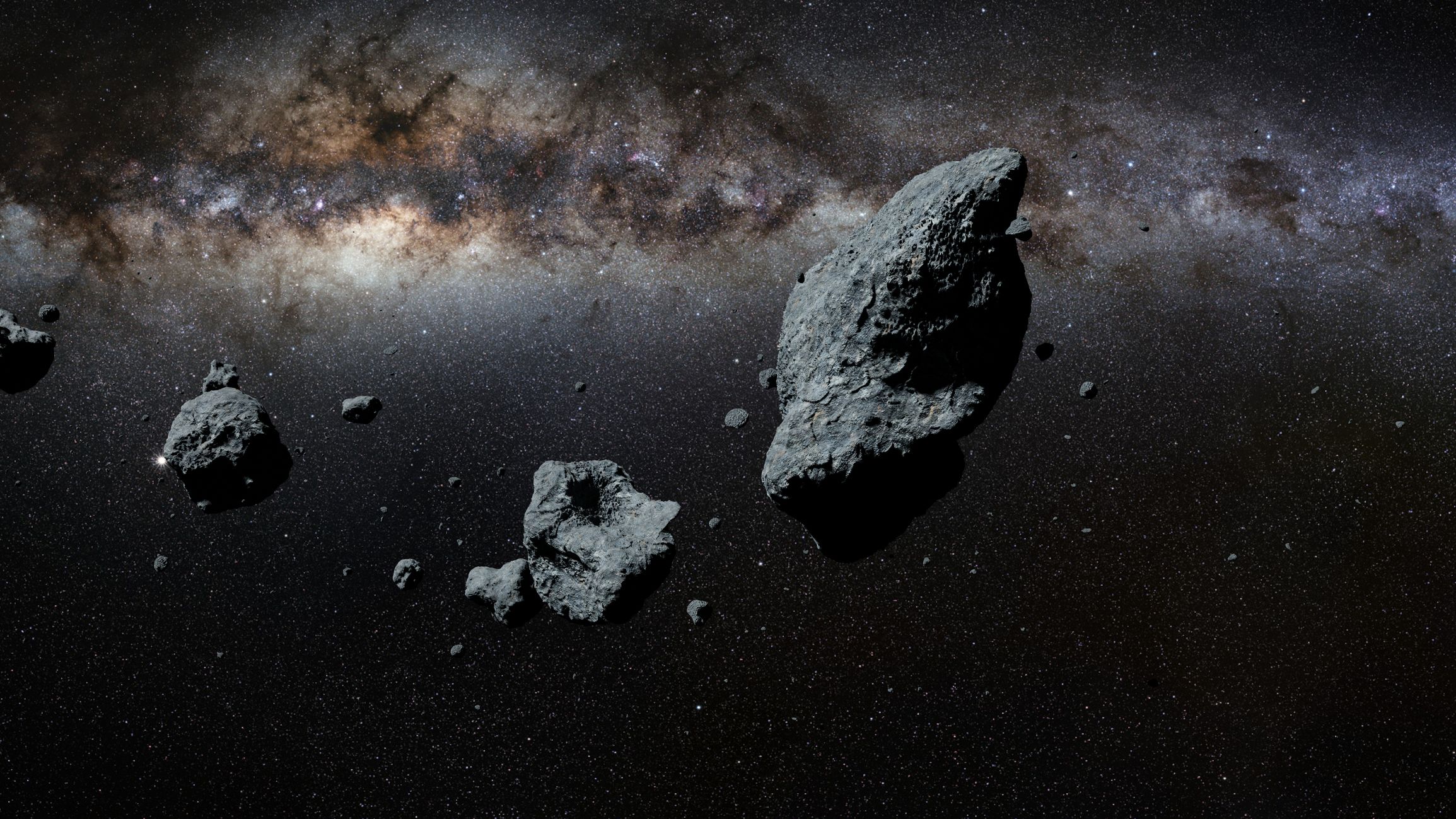
Extraction of Earth’s resources is vital for the advancement of modern infrastructure and technology. However, Earth’s resources are limited, and their continued use for the expansion and growth of humanity has resulted in their depletion. Mining is often destructive, we have little control over the global distribution of economically viable reserves of rare materials, and access to key deposits could be restricted by geopolitical and environmental circumstances. A new solution to these concerns lies in space resource utilisation (SRU), which involves accessing key resources and reserves on extra-terrestrial bodies such as asteroids or the Moon. However, existing policy frameworks lack the scope to regulate and enable this.
Space materials as resources
Extra-terrestrial bodies contain materials ranging from rocky silicate minerals to iron-dominated metals. Studies propose that bodies such as some asteroids and parts of the Moon contain potentially economically viable quantities of metals, such as platinum group metal elements, and volatiles such as water, hydrogen, and oxygen. Asteroids are both abundant and diverse in composition, so may be a useful source of a range of materials. It has been suggested that asteroids that collided with the Moon and are embedded in the Moon’s upper crust might represent mineable metal and platinum group element deposits. The Moon’s surface soil materials are rich in helium-3, an isotope that is critical to the development of advanced fusion nuclear power technologies. Lunar resources used in situ on the Moon might also support the fuel, construction, and water requirements of a sustained human presence on the Moon or other bodies. The exact distribution and concentration of the elements and compounds of interest is currently unknown – and the next phase of asteroid and lunar exploration seeks to answer these questions.
How do we access asteroid materials?
The technical challenges of accessing key materials remain extensive and varied depending on factors such as the size and makeup of the planetary body. Mechanisms for acquiring space resources typically involve the rocket-powered delivery of technology, designed for scraping surface material or digging into subsurface material. It has been proposed that smaller bodies like asteroids could be towed into Earth orbit by rocket-powered vehicles, although this has received criticism because of the potential for a significant impact hazard. Materials could be returned to Earth in bulk or processed on the parent body or in space to reduce cost by minimising the mass of returned material. However, these technologies are still largely hypothetical, meaning that such activities are not currently feasible.
Space resources research
In recent years, researchers have taken a renewed interest in SRU, with prominent missions such as the JAXA Hayabusa2 and NASA OSIRIS-REx missions successfully returning material from nearby asteroids to Earth. Research at The University of Manchester is linked directly to overcoming the challenges of accessing space resources, as we tackle the characterisation of material on and from the lunar surface and develop mechanisms for extracting it. This work highlighted the unknowns we have about the behaviour of planetary surface materials interacting with mechanical extraction tools, including issues around operations in low gravity environments and effects of highly abrasive materials. Researchers from across different faculties have also come together to host a workshop which explored the ethical implications of visiting and exploiting the resources of other worlds.
Mutually beneficial space policy
The Outer Space Treaty (OST), facilitated by the United Nations and signed in 1967 with 111 parties to date, establishes fundamental provisions for the exploration of space and has provided the basis for many international and domestic laws
relating to space activities developed since. It mandates that space and its resources be shared equally, and that activities be conducted peacefully and responsibly. These principles present a clear picture of SRU as a collaborative undertaking that works to the fair treatment of involved parties. However, the OST does not give the detailed instructions that government bodies and private companies need to navigate the legal and ethical obstacles that may present as SRU becomes technologically, economically, and strategically viable. Current space-related policy challenges, and the stakeholders involved in space-based activity, have changed since the treaty was signed 55 years ago. Signatories in 1967 did not have to seriously consider the ramifications of commercial space mining, but today’s policymakers could be dealing with commercial space activity in a matter of years. Policymakers should consider whether the treaty is fit-for-purpose for current, and future, space activities carried out by nations and companies.
Until recently, there has been little advancement towards an applicable policy framework. In 2019, the Hague Space Resources Governance Working Group (HSRGWG) identified areas within the current legal framework that require development, referred to as ‘building blocks’. Key points include that the priority of parties to mine resources be overseen by an international registry. Material and knowledge benefits of space activities should continue to be shared and acquired resources should be accessible through mechanisms such as trade. It is also crucial that space activities be conducted in a responsible and sustainable way that minimises harm to Earth environments and communities, as well as to space environments, a point which has been highlighted by research at The University of Manchester.
Next steps for policymakers
At present, these issues have not yet been addressed by any overarching, international policy initiative or regulatory framework. Some countries, such as the US and Luxembourg, have acted to permit preliminary space resource activities. The UK has yet to support such initiatives, although the 2018 Space Industry Bill will allow future commercial space launches from the UK. The UK Space Resources Bill was proposed in 2018 by the Asteroid Mining Corporation, a UK company associated with the development of Asteroid Prospecting Satellite One. The drafted bill outlines the right of UK nationals to “explore and use outer space and celestial bodies for the purpose of extracting space resources” but is not currently legal policy.
Key points for policymakers:
As technology is developed to support commercial activities, it is important that a collaboration-focussed, international policy framework is developed and implemented to maximise the benefits of space for everyone in a sustainable way.
Guidelines could be established based on the HSRGWG priorities, to implement fair priority access to valuable materials and ensure appropriate distribution of wealth and resources. Guidelines would need to be adaptable to developing access and beneficiation techniques.
Benefits of a policy framework would include sharing space resources to the benefit of all and advancing space activities in a methodical, responsible way. It would also create funding and employment opportunities for researchers and companies in countries that don’t have a domestic framework for space activities.
Thomas Harvey is a PhD student studying the occurrence of metal in lunar and meteorite samples to better understand the origin of their composition.
Katherine Joy is Professor of Lunar and Planetary Science at The University of Manchester, researching lunar and meteorite samples and using space mission data to understand geological processes on different planetary bodies.
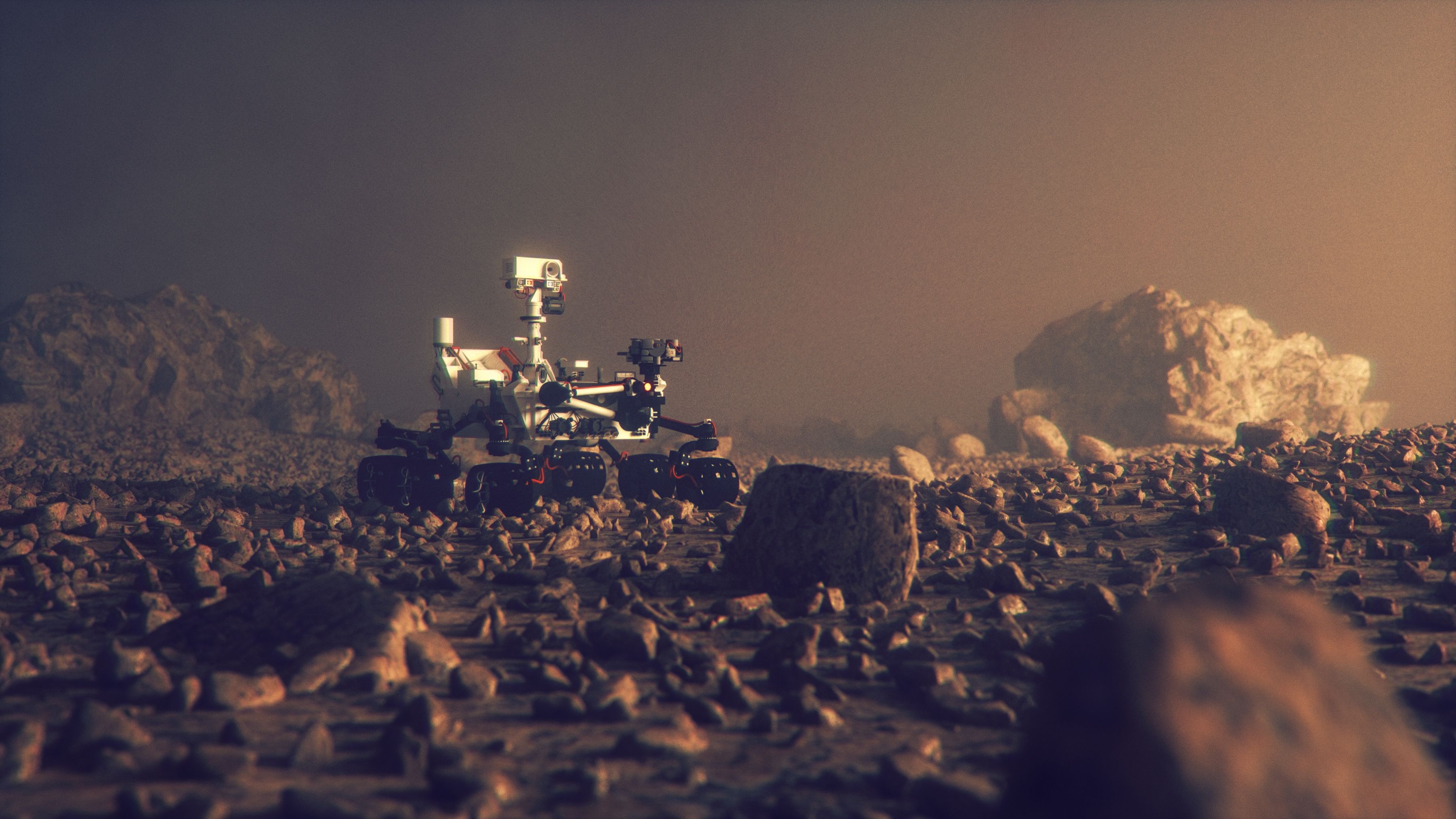
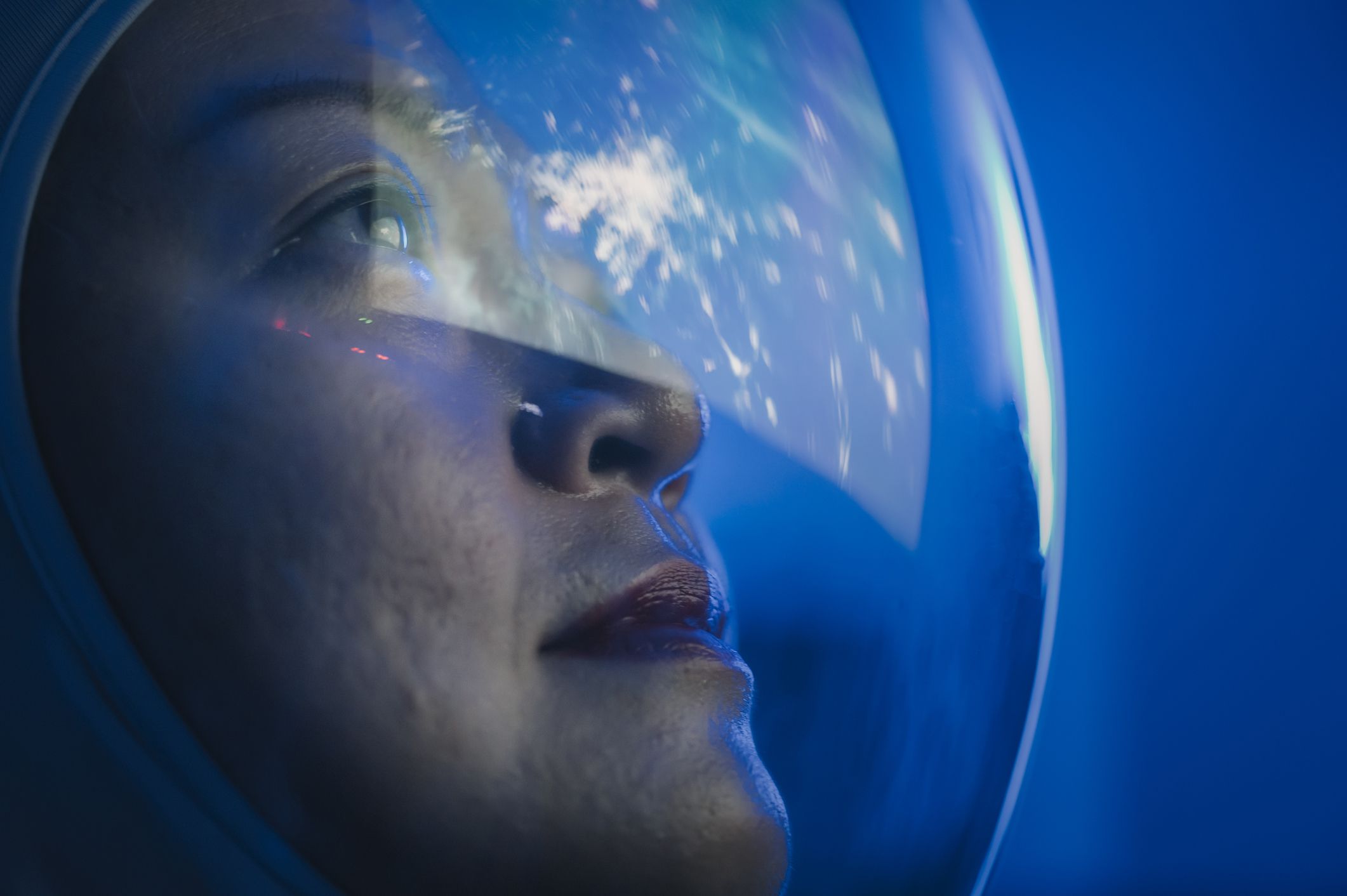
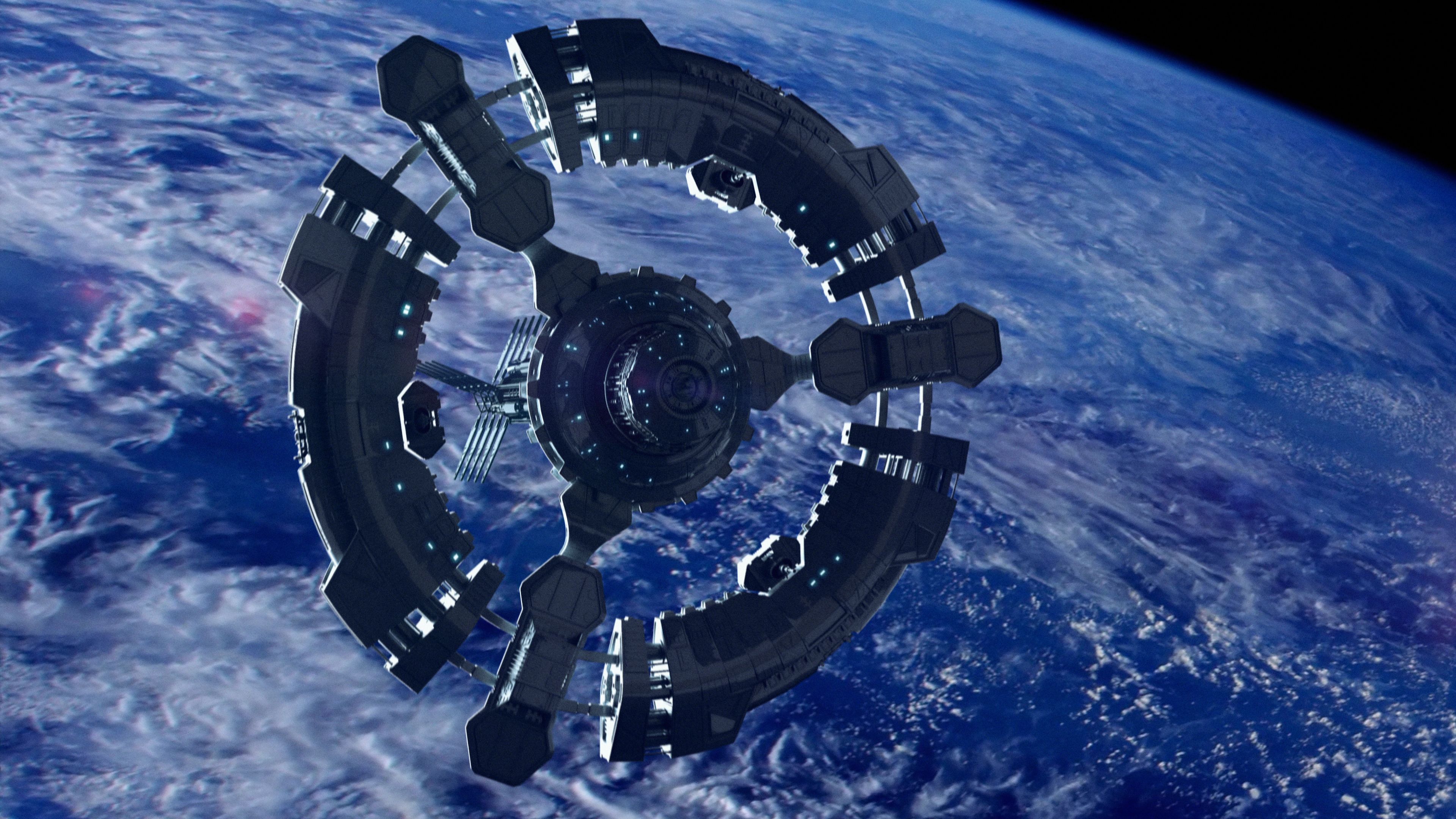


Analysis and ideas on space research and policy, curated by Policy@Manchester
With special thanks to our contributors:
Dr Peter Roberts is a Reader in Spacecraft Engineering at The University of Manchester.
Dr Vivek Koncherry is visiting researcher at The University of Manchester and Co-founder and CEO (UK and Europe) of Graphene Innovations Inc. Manchester (GIIM), based at Graphene Engineering Innovation Centre (GEIC).
James Baker is CEO of Graphene@Manchester and is a CEng and a Fellow of the RSA (the Royal Society for Arts, Manufactures and Commerce) and Fellow of IET.
Professor Emma Barrett OBE is Professor of Psychology, Security, and Trust at The University of Manchester, and Director of SPRITE+, the UKRI Digital Economy National Network for Trust, Identity, Privacy and Security. Her research and teaching interests are psychology and security, and the psychology of extreme environments. She is the co-author of Extreme: Why some people thrive at the limits (OUP, 2014).
Dr Nathan Smith is an Associate Professor of Security, Behaviour and Emerging Technology at Coventry University. His research is focused on workforce resilience and performance in extreme environments. Nathan is currently writing a book on human thriving in extremes for MIT Press.
Jodrell Bank Centre for Astrophysics
Coskun Kocabas is Professor of 2D Device Materials, The University of Manchester and National Graphene Institute. His research interests lie in the electronics, optical applications of 2D materials.
Molly Silk is a doctoral researcher based at the Manchester Institute of Innovation Research at The University of Manchester. Her research examines Chinese space policy and diplomacy, and she is also interested in the impacts of science and technology developments on security and defence.
Kieron Flanagan is Professor of Science and Technology Policy at The University of Manchester. He has worked on all aspects of science, technology and innovation policy, and has a special interest in the international dimensions of science and technology.
Dr Aled Roberts is a research fellow who specialises at the interface of materials engineering and biotechnology. He is based at the Future Biomanufacturing Research Hub within the Manchester Institute of Biotechnology.
Thomas Harvey is a PhD student studying the occurrence of metal in lunar and meteorite samples to better understand the origin of their composition.
Katherine Joy is Professor of Lunar and Planetary Science at The University of Manchester, researching lunar and meteorite samples and using space mission data to understand geological processes on different planetary bodies.
All opinions and recommendations made by article authors are made on the basis of their research evidence and experience in their fields. Evidence and further discussion can be obtained by correspondence with the authors; please contact policy@manchester.ac.uk in the first instance.
Read more and join the debate at: blog.policy.manchester.ac.uk
www.policy.manchester.ac.uk
@UoMPolicy #OnSpace
May 2022
The University of Manchester
Oxford Road, Manchester
M13 9PL
United Kingdom
The opinions and views expressed in this publication are those of the respective authors and do not necessarily reflect the views of The University of Manchester.
